TYPE DESIGN INFORMATION PAGE last updated on Sat Jan 10 11:44:39 EST 2026
FONT RECOGNITION VIA FONT MOOSE
|
|
|
|
|
Bengali fonts | ||
|
|
|
|
SWITCH TO INDEX FILE
"Bangla Ratne font-set is a derivation of Aadarsha Ratne font-set. Aadarsha as well as Bangla Ratne font-set is World's first 32-bit True Type Assamese, Bengali or Manipuri Font-Set that supports all type of "juktkshyar". Right now Bangla Ratne and Bangla Lata font-sets are available. "Seems like a commercial site. [Google] [More] ⦿ | |
Abhijit Das published the Bengali text editor in the 1990s. He also had several free Bengali PostScript fonts. In addition, he offered software for using Bengali in TEX and has Bengali X11 screen fonts. At that time, he was with the Department of Computer Science and Automation, Indian Institute of Science, Bangalore. [Google] [More] ⦿ | |
ItxBeng (Bengali, 1997), ItxGuj (Gujarathi, 1997, by Shrikrishna Patil), NCS_CSX+ (URW's Sanskrit, 1994), Xdvng (1997). [Google] [More] ⦿ | |
Ahm Masum
| |
Designer of some Kyrghyz typefaces such as Kyrghyz-AdverGothic, Kyrghyz-Antiqua, Kyrghyz-Avalon, Kyrghyz-Baltica, Kyrghyz-Bengaly, Kyrghyz-Century, Kyrghyz-FreeSet, Kyrghyz-Letterica, Kyrghyz-Times. This old download link has further Kyrghyz fonts, including Kyrgyzfnt, MenchikMemo, MenchikOn, MenchikStyle, MenchikUno, MenchikText. [Google] [More] ⦿ | |
Alphabetum
| Juan-José Marcos García (b. Salamanca, Spain, 1963) is a professor of classics at the University of Plasencia in Spain. He has developed one of the most complete Unicode fonts named ALPHABETUM Unicode for linguistics and classical languages (classical&medieval Latin, ancient Greek, Etruscan, Oscan, Umbrian, Faliscan, Messapic, Picene, Iberic, Celtiberic, Gothic, Runic, Modern Greek, Cyrillic, Devanagari-based languages, Old&Middle English, Hebrew, Sanskrit, IPA, Ogham, Ugaritic, Old Persian, Old Church Slavonic, Brahmi, Glagolitic, Ogham, ancient Greek Avestan, Kharoshti, Old Norse, Old Icelandic, Old Danish and Old Nordic in general, Bengali, Hindi, Marathi, Phoenician, Cypriot, Linear B with plans for Glagolitic). This font has over 5000 glyphs, and contains most characters that concern classicists (rare symbols, signs for metrics, epigraphical symbols, "Saxon" typeface for Old English, etcetera). A demo font can be downloaded [see also Lucius Hartmann's place]. His Greek font Grammata (2002) is now called Ellenike. He also created a package of fonts for Latin paleography (medieval handwriting on parchments): Capitalis Elegans, Capitalis Rustica, Capitalis Monumentalis, Antiqua Cursiva Romana, Nova Cursiva Romana (2014), Uncialis, Semiuncialis, Beneventana Minuscula, Visigothica Minuscula, Luxoviensis Minuscula, Insularis Minuscula, Insularis Majuscula, Carolingia Minuscula, Gothica Textura Quadrata, Gothica Textura Prescissa, Gothica Rotunda, Gothica Bastarda, Gothica Cursiva, Bastarda Anglicana (2014) and Humanistica Antiqua. PDF entitled Fonts For Latin Palaeography (2008-2014), in which Marcos gives an enjoyable historic overview. Alphabetum is not Marcos's only excursion into type design. In 2011, he created two simulation fonts called Sefarad and Al Andalus which imitate Hebrew and Arabic calligraphy, respectively. Cyrillic OCS (2012) is a pair of Latin fonts that emulate Old Church Slavonic (old Cyrillic). In 2013, he created Cuneus, a cuneiform simulation typeface. Paleographic fonts for Greek (2014) has ten fonts designed by Marcos: Angular Uncial, Biblical Uncial, Coptic Uncial, Papyrus Uncial, Round Uncial, Slavonic Uncial, Sloping Uncial, Minuscule IX, Minuscule XI and Minuscule XV. These fonts are representative of the main styles of Greek handwriting used during the Classical World and Middle Ages on papyrus and parchments. There is also a short manual of Greek Paleography (71 pages) which explains the development of Greek handwriting from the fourth century B.C. to the invention of printing with movable type in the middle of the fifteenth A.D. He wrote a text book entitled History of Greek Typography: From the Invention of Printing to the Digital Age (in Spanish; second edition, 2018). See also here and here. [Google] [More] ⦿ |
Alpona Portal is a Bengali information research portal. They have been researching the Bengali script for some time. They are also working on Bengali typography since 1998. There are free fonts for Bengali to download such as Boishakhi (2002). [Google] [More] ⦿ | |
Her typefaces include
Typecache link. [Google] [More] ⦿ | |
Belgian type designer. In 2018, she graduated from the University of Reading's MATD program. For her graduation, she designed Khela, a multi-script type family for longer book texts, such as novels. It supports settings in Latin and Bengali. [Google] [More] ⦿ | |
Ananda Computers
| At Ananda Computers in Dhaka, Mustafa Jabbar made SutonnyMJ (1998) and SutonnyP (1998), two Bangla fonts. In 1999, he created the Bengali font RinkiyMJ which can be found here and here. Sutonny download. [Google] [More] ⦿ |
Andrew Glass is a paleography expert who obtained his Ph.D. at the University of Washington in 2006. His links and downloadable fonts for various Indic languages included Gandhari Unicode, Devanagari Unicode, Bengali Unicode, Kharoshti Unicode, Rhino Kharoshti, and Times Gandhari CSX. The Gandhari Unicode fonts are based on an original Postscript font called "Nimbus Roman No9 L" created by URW++ Design and Development Incorporated and donated to the free software community under the GNU General Public License. The Nimbus Roman No9 L font is itself based on the design for Times New Roman by Stanley Morison. Defunct link. [Google] [More] ⦿ | |
Sgaon or Sonar Gaon is a Bangla font designed by Anisur Rahman from Milwaukee, WI, in the early 1990s. From the designer: "The Bangla font sgaon is a HP Laserjet softfont. In this implementation, the softfonts are converted to PostScript and the groff fonts are also generated from the Adobe Font Metrics, encoding, and map files." [Google] [More] ⦿ | |
Anshuman Pandey (University of Washington, Seattle) made a Bengali METAFONT. He also created wnri, a METAFONT set of fonts for Old English, Indic languages in transcription, and American Indian languages. The Washington Romanized (WNRI) Indic package enables texts encoded in the 8-bit Classical Sanskrit/Classical Sanskrit eXtended (CS/CSX) encoding to be typeset in \TeX{} without modification of the input scheme. Pandey also developed a LaTeX package for Gurmukhi/Punjabi, which uses a metafont he generated (with permission) from Hardip Singh Pannu's Punjabi truetype font. Frans Velthuis (Groningen University) developed a Devanagari Metafont in 1991, which is on the CTAN archive. Later, Anshuman Pandey took over the maintenance of font. Primoz Peterlin made type 1 outlines based on this. These outline renderings (Type 1) were automatically converted from METAFONT by Peter Szabo's TeXtrace, and subsequently edited using George Williams' PfaEdit PostScript font editor by Anshuman Pandey (University of Washington). In 2003-2004, additional updates in the set of 22 Metafont files are due to Kevin Carmody, who presently maintains the package. The font names: TeX-dvng10, TeX-dvng9, TeX-dvng8. These were later changed to VelthuisDevanagari8-Regular, VelthuisDevanagari9-Regular and VelthuisDevanagari10-Regular. This font was used in the GNU freefont project for the Devanagari range (U+0900-U+097F). [Google] [More] ⦿ | |
Free truetype fonts (ISFOG family) for Hindi, Marathi, Nepali, Gujarati, Tamil, Punjabi, Bengali, Assamese, Telugu, Malayalam, Kannada, Oriya. [Google] [More] ⦿ | |
Mumbai-based creator of IDC Screen Bangla (2012), a Bengali script developed for a Masters project. [Google] [More] ⦿ | |
arosgn2.1
| |
Elk Grove Village, IL-based company established in 2004, which specializes in font development, licensing and IP protection. It rose from the ashes of a major fire at Agfa/Monotype at the end of 2003. Its founders are Steve Matteson (type designer, formerly with Agfa/Monotype), Thomas Rickner (of Microsoft fame, where he hinted many Microsoft families), Ira Mirochnick (founder and President of Monotype Typography Inc in 1989 (where he was until 2000) and a Senior Vice President and director of Agfa Monotype Corporation (2000-2003), a self-proclaimed expert in font licensing issues and IP protection), and Bill Davis (most recently the Vice President of Marketing for Agfa Monotype). Also included in this group are Josh Hadley, Brian Kraimer, Jim Ford (since 2005), and Jeff Finger (as Chief Research Scientist, since 2006). On December 8, 2010, Ascender was acquired by Monotype for 10.2 million dollars. Their typefaces include Endurance (2004, Steve Matteson, an "industrial strength" Grotesk designed to compete with Helvetica and Arial; it supports Greek, Cyrillic and East European languages). In April 2005, Ascender announced that it would start selling the Microsoft font collection, which is possibly their most popular collection to date. They also started selling and licensing IBM's Heisei family of Japanese fonts in April 2005: Heisei Kaku Gothic, Heisei Maru Gothic and Heisei Mincho. Ascender's version of the CJK font Heiti is called ASC Heiti. Also in 2005, they started distributing Y&Y's Lucida family. In October 2005, Ascender announced the development of Convection, a font used for Xbox 360 video games. Their South Asian fonts cover Bengali, Devanagari, Gujarati, Gurmukhi, Kannada, Malayalam, Tamil and Telugu, and include Ascender Uni, Ascender UniDuo and Arial Unicode for general use across all Indic languages, and, in particular, the Microsoft fonts Vrinda (Bengali), Mangal (Devanagari), Shruti (Gujarati), Raavi (Gurmukhi), Tunga (Kannada), Kartika (Malayalam), Latha (Tamil) and Gautami (Telugu). Khmer SBBIC (2011) is a Khmer font at Open Font Library. It does more type trading and licensing than type creation, although Steve Matteson has contributed fairly well to their new typefaces. Their brand value took a hit when they started selling scrapbook, handwriting and wedding fonts under the name FontMarketplace.com. Recent contributions: Crestwood (2006, a house face, possibly by Steve Matteson) is an updated version of an elegant semi-formal script typeface originally released by the Ludlow Type Foundry in 1937. In 2009, they started a subpage called GoudyFonts.Com to sell their Goudy revivals. In 2010, they announced a new collection of OpenType fonts created specifically for use in Microsoft Office 2010: Comic Sans 2010 (including new italic and bold italic fonts), Trebuchet 2010 (including new black&black italic fonts), Impact 2010, Pokerface 2010, Rebekah 2010 and Rebus Script 2010. Ligatures in Comic Sans? View Ascender's typefaces. [Google] [MyFonts] [More] ⦿ | |
Avinash Chopde
| |
Baloo
| Baloo is a free display font available in nine Indian scripts along with Latin. Included are Baloo-Devanagari, BalooBhai-Gujarati, BalooTammudu-Telugu, BalooBhaina-Odia (Oriya), BalooChettan-Malayalam, BalooDa-Bangla, BalooPaaji-Gurmukhi, BalooTamma-Kannada, and BalooThambi-Tamil. The project's leader is Girish Dalvi, and the project is in the hands of Ek Type. Type design help came from Ek Type, and in particular from Ek Type's Sarang Kulkarni (for Devanagari) and Noopur Datye (for Baloo Da-Bangla). Maithili Singre helped with Malayalam. Baloo Bhai was designed by Supriya Tembe and Noopur Datye. Baloo Thambi is designed by Aadarsh Rajan. Google Fonts link. Baloo 2 (2021) consists of ten font families with unique local names for each of the nine Indic scripts plus Arabic (Baloo Bhaijaan 2, by Sanskriti Dholi and Noopur Datye). Each family supports one Indic/Arabic script plus Latin, Latin Extended, and Vietnamese. The Gurmukhi is designed by Shuchita Grover; Bangla by Noopur Datye and Sulekha Rajkumar; Odia by Yesha Goshar, Manish Minz, and Shuchita Grover; Gujarati by Noopur Datye and Supriya Tembe; Kannada by Divya Kowshik and Shuchita Grover; Telugu by Maithili Shingre and Omkar Shende; Malayalam by Maithili Shingre and Unnati Kotecha; and Tamil by Aadarsh Rajan. Baloo Devanagari and Latin are collaboratively designed by Ek Type. Font engineering and type design assistance by Girish Dalvi. [Google] [More] ⦿ |
A free Bangla truetype font, Darshan. Designed by Shamim Shahriar (DRIK). [Google] [More] ⦿ | |
Long list of links and downloads of Bangla fonts, maintained by Rezaul Karim. [Google] [More] ⦿ | |
Bangtex
| Bangtex is a package for typesetting documents in Bangla and Assamese using the Tex/Latex systems, developed by Calcutta-based Palash Baran Pal, Saha Institute of Nuclear Physics, Calcutta. It includes a metafont family. See also here. Designer of the free Unicode-based Bengali font Akaash (2003), which can be found here and here. The latter font is part of a free Bengali font effort by the FreeFonts Project. Akaash is co-produced by Sayamindu Dasgupta. [Google] [More] ⦿ |
Two free Bengali fonts here on Sanhita Mallick's page (Sanhita studied at the University of Tokyo!). [Google] [More] ⦿ | |
Free Bengali truetype and Opentype fonts: HortukiNormal, JamrulNormal, LikhanNormal, muktinarrow, SantipurOT. The first three are by Deepayan Sarkar. [Google] [More] ⦿ | |
Bengali truetype Fonts
| Vendors of Bengali truetype fonts, including an Indian Symbol Font, Tomal-n, Tomal-e, Rosogolla, Sandesh, Pantua, Sagar-n, Sagar-c, Sagar-e, Sagar-l, Krishna-n, Krishna-c, Krishna-e, Namita-n, Namita-c, Namita-e, Tulsi-n, Tulsi-c, Tulsi-e, Tushar-n, Tushar-c, Tushar-e, Durga-n, Durga-c, Durga-e, Durga-l, Shapna-n, Shapna-c, Shapna-e, Ganga-n, Ganga-c, Ganga-e. The creator is T.K. Ganguly. [Google] [More] ⦿ |
Site where one can download Bangla (Unicode) and Utkal (Unicode font by Andy White for Oriya). [Google] [More] ⦿ | |
Mumbai, India-based designer in 2018 of Anya Latin, Anya Bengali and Anya Maithili (Maithilki is a scrpt on the verge of extinction). [Google] [More] ⦿ | |
Black Foundry
|
|
Site with fonts representing all Indic scripts (all made by C-DAC, Pune): AS-TTDurga-Normal, BN-TTDurga-Normal, DV1-TTYogesh-Normal, DV-TTYogesh-Normal, GJ-TTAvantika-Normal, KN-TTUma-Normal, ML-TTKarthika-Normal, OR-TTSarala-Normal, PN-TTAmar-Normal, TL-TTHemalatha-Normal, TM-TTValluvar-Normal. [Google] [More] ⦿ | |
| |
Hindi and Bengali fonts: KrutiDev020Bold, BN-TTBidisha-Bold, BN-TTBidisha-Italic, BN-TTBidisha-Normal, BN-TTBidisha-Bold-Italic, BN1-TTBidisha-Bold, BN1-TTBidisha-Italic, BN1-TTBidisha-Normal, BN1-TTBidisha-Bold-Italic. The BN series is by C-DAC, Pune. [Google] [More] ⦿ | |
Font archive at Swedish University Network SUNET, mirrored from cica. Has a Bengali font, a Telugu font, a Tamil font, a Tarot font, Sanskrit font and several Cyrillic fonts. [Google] [More] ⦿ | |
Company in Mumbai (with offices in Bangalore) that made these Malayalam fonts: AkrutiMal1, AkrutiMal2 (2002). They also created the Kannada font LangscapeKndPadma. Here, you can download their Devanagari family Gargi, and their Gujarati font family Padmaa. They also made the well-known Akruti font family which can be downloaded here: AkrutiBng2Bold, AkrutiBng2Normal, AkrutiDev2Normal, AkrutiGuj1Normal, AkrutiGujL1Bold, AkrutiKnd1Bold, AkrutiKnd1Normal, AkrutiMal2Bold, AkrutiMal2Normal, AkrutiOri1Bold, AkrutiOri1Normal, AkrutiPnj2Bold, AkrutiPnj2Normal, AkrutiTlg2Bold, AkrutiTlg2Normal, AkrutiTml1Bold, AkrutiTml1Normal. These fonts cover Devanagari, Gujarati, Telugu, Tamil, Malayalam, Kannada, Bengali, Oriya, and Gurumukhi. [Google] [More] ⦿ | |
Free Indic fonts that come with Debian:
| |
Designer of the free Unicode-based Bengali font Likhan (2003), which can be found here. An OpenType version now also exists. In 2004, he created Hortuki and Jamrul, which can be found here. See also here. [Google] [More] ⦿ | |
Organized font archive. Many subcategories including Party fonts, Holiday fonts, Balloons, Halloween, Christmas, screen fonts, phonetic fonts, African, Balinese, Bengali, Burmese, Cambodian, Croata-glagolitic, Cyrillic, Ethiopic, Georgian, Greek, Hebrew, Hindi, Hmong, Japanese, Javanese, Khmer, Lao, Malayan, Nepali, Nko, runes, Tamil, Vietnamese. [Google] [More] ⦿ | |
Developer of the Bengali font Ani (2002, also called Mukti Narrow), now also in OpenType, as well as the monospaced Bengali font, Mitra Mono. See also here. MultiNarrow is also here. See also here. Open Font Library link. [Google] [More] ⦿ | |
EK Type
|
Typefaces at Ek Type from 2011 by Hanif Kureshi include Painter Umesh, Painter Kafeel, and Painter Suhail. In 2013, Girish Dalvi and Yashodeep Gholap co-designed Ek Devanagari at Ek Type for Hindi, Marathi, Sanskrit, Konkani and Nepali. It is a contemporary, humanist, monolinear typeface available in seven weights. Its companion, also designed by them, is the humanist sans typeface family Ek Latin (2013). Designer of Modak (2013, Ek Type), a Latin / Devanagari bubblegum typeface that was published in the Google Web Font collection in 2015. Modak Devanagari was designed by Sarang Kulkarni and Maithili Shingre and Modak Latin by Noopur Datye with support from Girish Dalvi and Pradnya Naik. Github link. Another Github link for Modak. In 2012, he designed Star Jalsha, a Bengali television screen font for Star India Pvt Ltd. In 2016, Ek Type designed the free Latin / Devanagari / Gujarati font Mukta Vaani. More precisely, it was designed by Noopur Datye and Pallavi Karambelkar with support from Sarang Kulkarni and Maithili Shingre. Google Fonts link. Github link. In 2017, EK Type released Jaini and Jaini Purva designed by Girish Dalvi and Maithili Shingre: Jaini is a devaagari typeface based on the calligraphic style of the Jain Kalpasutra manuscripts. The design of this font is based on the 1503 Kalpasutra manuscript. In 2020, EK Type published the devanagari typeface Gotu at Google Fonts. Niranjan collected these EK fonts:
In 2022, Ek Type released a multi-script (variable) Indic typeface family that includes Anek Telugu, Anek Malayalam, Anek Latin, Anek Kannada, Anek Gurmukhi, Anek Tamil, Anek Odia, Anek Gujarati, Anek Devanagari, and Anek Bangla. Contributors of this project are: Maithili Shingre (Anek Malayalam, Anek Kannada), Yesha Goshar (Anek Latin, Anek Odia), Kailash Malviya (Anek Devanagari), Aadarsh Rajan (Anek Tamil), Sulekha Rajkumar (Anek Bangla), Vaishnavi Murthy (Anek Kannada), Omkar Bhoir (Anek Telugu), Mrunmayee Ghaisas (Anek Gujarati), Mahesh Sahu (Anek Odia), and Sarang Kulkarni (Anek Gurmukhi). Project management and design assistance by Noopur Datye, and Font engineering and design assistance by Girish Dalvi. Ek Type won an award at 25 TDC in 2022 for Anek. The designers mentioned in the TDC press release are Girish Dalvi, Noopur Datye, Sarang Kulkarni, Aadarsh Rajan, Kailash Malviya, Mahesh Sahu, Maithili Shingre, Mrunmayee Ghaisas, Omkar Bhoir, Sulekha Rajkumar, Vaishanvi Murthy, and Yesha Goshar. Github link for Anek. Behance link. White Crow Designs link [White Crow was established in 2005 in Mumbai by Sarang Kulkarni]. Typophile link. Behance link. White Crow Designs. Fontsquirrel link. Github link. Fontsquirrel link. [Google] [More] ⦿ |
Free software for typing Bengali, by Altruists International. From the developer, Robin Upton: "It is an add-in for Micro$oft Word 97/2000/XP, comes with three TTF's, is compatible with the most popular commercial packages, has a lot of extra features and should be a boon to anyone interested in Bengali." [Google] [More] ⦿ | |
Ekushey Unicode Based OpenType Bangla Fonts
|
Free OpenType Bangla fonts created by Solaiman Karim, with the help of Omi Azad: Rupali (2002), SolaimanLipi (20030. Omi Azad has worked with Microsoft to help them develop Bengali OTF&Uniscribe Rendering engine for Bangla. He also tested the Microsoft Keyboard Layout Creator and currently testing the Microsoft Unicode Uniscribe Text Engine for Bangla&Microsoft Official OTF Bangla fonts. Other free fonts added in 2005: # Ekushey Sharifa, Ekushey Punarbhaba, Ekushey Sumit (see also here), Ekushey Durga, Ekushey Saraswatii, Ekushey Puja, Ekushey Azad, Ekushey Godhuli, Ekushey Mohua (see also here). Also available on this page is Likhan (Deepayan Sarkar |
Elmar Kniprath
| |
Elmar Kniprath
| |
Elmar's Indic
| A free package by Elmar Kniprath (2001) for writing Assamese, Bengali, Gujarati, Hindi, Kannada, Malayalam, Marathi, Nepali, Panjabi, Rajasthani, Sanskrit, Sinhalese, Tamil, Telugu and Latin transliteration. Fonts included are e-Asamiya, e-Bengali, e-Gujarati, e-IndicSerif-Bold, e-IndicSerif, e-Kannada, e-Latin, e-Malayalam, e-Nagari, e-Panjabi, e-Sinhala, e-Tamil, e-Telugu. Download page. [Google] [More] ⦿ |
Faisal H. Khan
| |
Fezyweb
| Somenath Sen (Fezyweb, Calcutta, India) designed the connected script typeface The Handy (2014). [Google] [More] ⦿ |
The Adobe Thai typefaces were commissioned from Tiro Typeworks and collaboratively designed by Fiona Ross, John Hudson and Tim Holloway in 2004-2005 for use with Adobe Acrobat (production by Tiro Typeworks). Vodafone Hindi (2007, with Tim Holloway and John Hudson) won an award at TDC2 2008. Co-designer with Robert Slimbach and Tim Holloway of Adobe Devanagari. Between 1978 and 1982, Tim Holloway and Fiona Ross designed Linotype Bengali based on Ross's research for her doctoral studies in Indian palaeography. In 2020, Fiona Ross and Neelakash Kshetrimayum were commissioned by Monotype to update that popular typeface, still called Linotype Bengali. In 2018, Borna Izadpanah, Fiona Ross and Florian Runge co-designed the free Google Font Markazi Text. They write: This typeface design was inspired by Tim Holloway's Markazi typeface, with his encouragement, and initiated by Gerry Leonidas as a joint University of Reading and Google project. The Arabic glyphs were designed by Borna Izadpanah and design directed by Fiona Ross, they feature a moderate contrast. It takes its cues from the award-winning Markazi typeface, affording a contemporary and highly readable typeface. The complementary Latin glyphs were designed by Florian Runge. It keeps in spirit with its Arabic counterpart, echoing key design characteristics while being rooted in established Latin traditions. It is an open and clear design with a compact stance and an evenly flowing rhythm. Four weights are advertized at Google, but only the Regular is available. Bio at ATypI. Her books and/or essays:
Speaker at ATypI 2010 in Dublin and at ATypI 2018 in Antwerp. [Google] [MyFonts] [More] ⦿ | |
FontYou
|
Based in Viroflay, Gregori designed the text fonts Albia (1997) and Firenzia (1998). He won a judge's award at the Sixth Morisawa type competition in 1999. In 2002, he received a nomination for "Lipton Ice Tea", a corporate identity font, at the Trophées d'Or du salon Intergraphic de Paris. In 2003, he set up 4-Paris, a graphic and typographic design company. In 2013, he started Fontyou, where he is CEO of a commercial font coop. At Fontyou, he published a few remarkable typefaces, including
Klingspor link. Black Foundry link. [Google] [MyFonts] [More] ⦿ |
The Free Bangla Fonts Project is a volunteer project dedicated for creating Free, high quality, completely Unicode compliant Open Type Bengali fonts. There are four foci for now:
| |
Spanish language site for various non-Latin language fonts. A sampling: Afus Deg Wfus 2 (for Berber), AlKatib1 (2001, an Arabic typeface by Naseem Amjad), Albanian, Alice_0 (Lao typeface by by Ngakham Southichack), LAOMAY_5 CHAREUNSILP (Lao typeface by by Soupasith Bouahom), Arial AMU (1999, Armenian typeface by Ruben Tarumian), BaltFrutigerLight, BaltHelveticaMedium, BaltNewCenturySchoolbookMedium, BaltOptimaMedium, BaltTiffanyMedium, BaltUniversityMedium, CarloAtor (1997, Arabic family by Timm Erickson, Summer Institute of Linguistics), Caligraf-W, Ciula (1996, a Romanian typeface by Paul Hodor), Cursiv (Romanian), AnlongvillKhek, GabrialAtor (another Arab family by Timm Erickson), Gin, Greek (1993, by Peter J. Gentry&Andrew M. Fountain), HandSign (1993, Sam Wang), HFMassisShantNUnicode (1990-1994, an Armenian unicode typeface by BYTEC Computers and Massis Graphics), HONGKAD (1994, a family by Dr. Hongkad Souvannavong), IsmarBold, IsmarLight, Lakshmi, X000000A (1994, a lao typeface by Sith Bouahom), LAOMAY_2-CHAREUNSILP, Alice3Medium, Alice0Medium, Langagedessignes (1998, by Philippe and François Blondel), NorKirk (1997, a great Armenian typeface by Ruben Tarumian), NovaTempo (for Esperanto), Pazmaveb (for Armenian), ILPRumanianB100 (1996, by Charles J. Coker), Saysettha-Lao, Saysettha-LaoBold, SenzorgaAnhok, Timok, Tribuno, Turn-W, TimesUnicode, ArialAMU, PoliceTypeAPI (for Armenian), Cieszyn-Regular, PoojaNormal, Shibolet (1995, Hebrew), Shree-Ass-0552 (2000, by Modular InfoTech), Tudor-Semi-Lite, Webdunia, TimesNRCzech, TNRLiboriusVII (2001, a fully accented Times typeface by Libor Sztemon), GreatMoravia (2001 Libor Sztemon, Czechia), Johaansi-ye-Peyravi (2001, a full accent blackletter typeface by Libor Sztemon, Czechia), TimesNREuskaraEuransiEsperanto (2001, Libor Sztemon). [Google] [More] ⦿ | |
The free software foundation of India, in conjunction with Cyberscape Multimedia Limited, Bangalore (developers of Akruti Software for Indian Languages) have released a set of TTF fonts for nine Indian scripts (Devanagari, Gujarati, Telugu, Tamil, Malayalam, Kannada, Bengali, Oriya, and Gurumukhi) under the GNU General Public License (GPL). Direct download page. Font names: AkrutiBng1Normal, AkrutiBng2Bold, AkrutiBng2Bold, AkrutiBng2Normal, AkrutiDev1Bold, AkrutiDev1Normal, AkrutiDev2Normal, AkrutiGuj1Bold, AkrutiGuj1Normal, AkrutiGuj2Bold, AkrutiGuj2Normal, AkrutiKnd1Bold, AkrutiKnd1Normal, AkrutiKnd2Bold, AkrutiKnd2Normal, AkrutiMal1Bold, AkrutiMal1Normal, AkrutiMal2Bold, AkrutiMal2Normal, AkrutiMal2Normal, AkrutiOri1Bold, AkrutiOri1Normal, AkrutiOri2Bold, AkrutiOri2Normal, AkrutiPnj1Bold, AkrutiPnj1Normal, AkrutiPnj2Bold, AkrutiPnj2Normal, AkrutiTlg1Bold, AkrutiTlg1Normal, AkrutiTlg2Bold, AkrutiTlg2Normal, AkrutiTml1Bold, AkrutiTml1Bold, AkrutiTml1Normal, AkrutiTml1Normal, AkrutiTml2Bold, AkrutiTml2Bold, AkrutiTml2Normal, AkrutiTml2Normal. [Google] [More] ⦿ | |
Free fonts for Indic languages: Gautami, Mangal-Regular, Raavi, Shruti, and Ekushey Mohua (Bengali). [Google] [More] ⦿ | |
Designer of the Bangla fonts SulekhaT (1997) and Sunetra (1997). His company is called Computer Village. [Google] [More] ⦿ | |
Girish Dalvi
| |
This was a sub-site of C-DAC, India's main commercial font and language software maker. It used to have free Tibetan and Gujarati fonts. For a while, it offered commercial products for all Indic languages, including Tibetan and Nepali. Then, finally, it went the way of all big companies--unreadable pages with hard-to-find stuff, often hidden in PDF files. For good old times' sake, here are the font names (published as a courtesy to them--wish they would do this themselves): AS-Abhijit, AS-Amrut, AS-Arbindo, AS-Bidisha, AS-Bipin, AS-Debashish, AS-Durga, AS-Kaali, AS-Kailash, AS-Maya, AS-Mrinal, AS-Parshuram, AS-SantoshItalic, AS-Satyajit, AS-Savita, AS-Shyamal, AS-Sushmita, AS-Tagore, BN-Abhijit, BN-Amrut, BN-Arbindo, BN-Bidisha (see also here), BN-Bipin, BN-Debashish, BN-Durga, BN-Kaali, BN-Kailash, BN-Maya, BN-Mrinal, BN-Parshuram, BN-Santosh, BN-Satyajit, BN-Savita, BN-Shyamal, BN-Sushmita, BN-Tagore, DR-Kunzang, DV-Aakash, DV-Aishwarya, DV-Ajay, DV-Akshar, DV-Alankar, DV-Amruta, DV-Aniket, DV-Anjali, DV-Basant, DV-Bhargav, DV-Bhima, DV-Brinda, DV-Chhaya, DV-Devendra, DV-Dhruv, DV-Diwakar, DV-Gandhar, DV-Ganesh, DV-Hemant, DV-Jamuna, DV-Jayesh, DV-Jivan, DV-Kartik, DV-Kishor, DV-Latika, DV-Madhu, DV-Makarand, DV-Manisha, DV-Manohar, DV-Mayur, DV-Megha, DV-Meghadoot) def, DV-Mohini, DV-Nandan, DV-Natraj, DV-Ninad, DV-Nisha, DV-Prakash, DV-Pramod, DV-Preetam, DV-Purva, DV-Radhika, DV-Raghav, DV-Rahul, DV-Rajashri, DV-Rakesh, DV-Raman, DV-Ranjita, DV-Rohini, DV-Sachin, DV-Sagar, DV-Sajan, DV-Samata, DV-Samir, DV-Sanket, DV-Shalaka, DV-Sharad, DV-Shefali, DV-Shishir, DV-Shital, DV-Shridhar, DV-Shrikant, DV-Subodh, DV-Sumeet, DV-Surekh, DV-Surkhiyan, DV-Sushil, DV-Swapnil, DV-Swaraj, DV-Vallabh, DV-Varun, DV-Vasuki, DV-Vasundhara, DV-Vijay, DV-Vimal, DV-Vinit, DV-Vishakha, DV-Yamini, DV-Yogesh, DV-Yogesh, GJ-Anamika, GJ-Anand, GJ-Avantika, GJ-Balram, GJ-Bela, GJ-Chitra, GJ-Damodar, GJ-Devaki, GJ-Dinakar, GJ-Dwarika, GJ-Dynamic, GJ-Gagan, GJ-Gopika, GJ-Kalpana, GJ-Kamini, GJ-Kanoj, GJ-Kapila, GJ-Kaumudi, GJ-Keshav, GJ-Kirit, GJ-Kishan, GJ-Krishna, GJ-Krishna, GJ-Kusum, GJ-Madan, GJ-Manasi, GJ-Mangal, GJ-Mira, GJ-Mohan, GJ-Mukul, GJ-Nayan, GJ-Nirmal, GJ-Piyush, GJ-Prabha, GJ-Pratik, GJ-Purnima, GJ-Radhey, GJ-Ritesh, GJ-Rohini, GJ-Rohit, GJ-Sabarmati, GJ-Sandeep, GJ-Shila, GJ-Shreedeep, GJ-Shrinath, GJ-Snigdha, GJ-Sucheta, GJ-Sujit, GJ-Swati, GJ-Taapi, GJ-Tara, GJ-Vidya, GJ-Yashoda, ISFOC-BR1, ISFOC-BR2, ISFOC-BR3, ISFOC-BR7, ISFOC-BR8, KN-Basava, KN-Bharat, KN-Brindavan, KN-Chinmaya, KN-Kamala, KN-Kamanna, KN-Kasturi, KN-Kaveri, KN-Nandi, KN-Padmini, KN-Pampa, KN-Pankaj, KN-Radhey, KN-Ragini, KN-Rajani, KN-Rajeshwari, KN-Ranna, KN-Seema, KN-Seema-Light, KN-Seema, KN-Seeta, KN-Shankar, KN-Shravan, KN-Smita, KN-Sumitra, KN-Uma, KN-Vatapi, ML-Aathira, ML-Ambili, ML-Anakha, ML-Anjali, ML-Aparna, ML-Ashtamudi, ML-Aswathi, ML-Atchu, ML-AyilyamBold, ML-BeckalBold, ML-Bhavana, ML-Chandrika, ML-Chithira, ML-Devika, ML-Gauri, ML-Geethika, ML-Gopika, ML-Guruvayur, ML-Indulekha, ML-Jaya, ML-Jyothy, ML-Jyotsna, ML-Kala, ML-Kamini, ML-Kanika, ML-Karthika, ML-Kaumudi, ML-Keerthi, ML-Leela, ML-Malavika, ML-Mammiyoor, ML-Mayoori, ML-Nalini, ML-Nandini, ML-Nanditha, ML-Nila, ML-Onam, ML-Periyar, ML-Pooram, ML-Poornima, ML-Ravivarma, ML-Revathi, ML-Rohini, ML-Sabari, ML-Sankara, ML-Sarada, ML-Sruthy, ML-Sugatha, ML-Suparna, ML-Surya, ML-SwathyBold, ML-Thakazhi, ML-Theyyam, ML-Thiruvathira, ML-Thunchan, ML-Vaisali, ML-Varsha, ML-Vinay, ML-Visakham, ML-Vishu, ML-Yashasri, PN-Amar, PN-Baisakhi, PN-Baljit, PN-Bishan, PN-Chandra, PN-Chetan, PN-Deeler, PN-Dipak, PN-Gurudev, PN-Hira, PN-Jasbir, PN-Jasjit, PN-Jaspal, PN-Jeevan, PN-Joginder, PN-Kanvaljit, PN-Kapil, PN-Karan, PN-Karishma, PN-Kavita, PN-Komal, PN-Manjit, PN-Nanak, PN-Nitu, PN-Pratap, PN-Randhir, PN-Satabir, PN-Sonam, PN-Sukhabir, PN-Sushil, SD-Natraj, SD-Surekh, SH-Harmony, SH-Namal, SY25-Election, SY30-Jain, SY31-Mudras, SY32-Music, TB-Youtso (for Tibetan), TB1-Youtso, TL-Amma, TL-Anuradha, TL-Atreya, TL-Charminar, TL-Godavari, TL-Gurazada-BoIdItalic, TL-Harshapriya, TL-Hemalatha, TL-Krishna, TL-Nannaya, TL-Pratima, TL-Rayancha, TL-Tanmayi, TL-Tikkana, TL-Vennela, TL-Vishaka, TM-Abhirami, TM-Amala, TM-Appar, TM-Archana, TM-Aruna, TM-Arunagiri, TM-Avvai, TM-Bharathi, TM-Chanakya, TM-Chandra, TM-Chetan, TM-Chitra, TM-Gopur, TM-Heena, TM-Hema, TM-Ilango, TM-Kalyani, TM-Kamal, TM-Kamban, TM-Kannadasan, TM-Kapilan, TM-Komala, TM-Krishna, TM-Lalitha, TM-Lathika, TM-Madhu, TM-Madhuram, TM-Nakkeran, TM-Nambi, TM-Neha, TM-Padma, TM-Pattinathar, TM-Poornima, TM-Poovai, TM-Radhika, TM-Rajarajan, TM-Rama, TM-Ramiya, TM-Ratna, TM-Ravindra, TM-Rekha, TM-Seema, TM-Shiva, TM-Sudhir, TM-Swetha, TM-Umesh, TM-Valluvar, TM-Vaman, TM-Venu, TM-Virendra, Tarpobane-Black. [Google] [More] ⦿ | |
GNU Freefont (or: Free UCS Outline Fonts)
|
Fontspace link. Crosswire link for Free Monospaced, Free Serif and Free Sans. Download link. [Google] [More] ⦿ |
The Ministry of Culture of the Republic of Armenia and the Typographic Society Munich (tgm --- Typographische Gesellschaft München) are organizing Granshan 2012, The Fifth International Type Design Competition for Non-Latin Typefaces, which was created especially for Armenian, Cyrillic, Greek, Indic (i.e., Devanagari, Bengali, and Tamil only) and Arabic fonts. Exceptionally, this year, Latin fonts designed in the last ten years can also be nominated. Edik Ghabuzyan and Boris Kochan are the big bosses. The jury consists of Timothy Donaldson, Otmar Hoefer, Ahmed Mansour, Fiona Ross, Manvel Shmavonyan, Panos Vassiliou, and Vladimir Yefimov. There are five expert panels:
| |
Gregori Vincens
| |
FontShop link. Linotype link. Klingspor link. MyFonts collection. View Grinbergs's typefaces. [Google] [MyFonts] [More] ⦿ | |
Lively South Asian type blog covering Bengali, Devanagari, Gujarati, Gurmukhi, Kannada, Malayalam, Oriya, Perso-Arabic, Sinhala, Tamil, Telugu, Tibetan. [Google] [More] ⦿ | |
Kumar Bengali is driven by the same principles as the Latin, seeking for a coherent combination between the two scripts to optimize legibility. Significant early references have been used such as the Figgins Bengali from 1826 for its fluidity, yet updated with contemporary proportions. Kumar Book italic originates from an interpretation of several italics of Robert Granjon, adapted to work with the roman weight. Marcel (2016) is based on lettering drawn by Marcel Jacno for Caractère in 1949. During his studies in Paris, Hugues Gentile created Ignacius (2014: an angular calligraphic typeface) and drew a blackletter alphabet (2014). In 2019, a senior type designer Production Type, he designed the custom typeface Ormaie for a new Parisian perfume brand founded by Marie-Lise Jonak. In 2020, Hugues Gentile, under the art direction of Jean-Baptiste Levée, designed the extensive text family Newsreader, which is primarily intended for continuous on-screen reading in content-rich environments. It features various optical sizes and comes with variable typefaces. Github link. Google Fonts link (for free download). [Google] [More] ⦿ | |
Indian Type Foundry (ITF)
|
In 2010, Satya N. Rajpurohit published the Kohinoor family for Latin, Devanagari and Tamil. Kohinoor Gurmukhi followed in 2011. The long term plan is to make Kohinoor support all official writing scripts of India. Kohinoor Gujarati is at the last stage of development and will be published soon. Kohinoor Bengali, Kohinoor Malayalam, and Kohinoor Kannada are scheduled for 2012. ITF Devanagari was published in 2011. In 2013, Satya Rajpurohit created the Latin typefaces Pilcrow and Pilcrow Soft. Also in 2013, Peter Bilak left ITF to pursue other interests. In 2014, Sanchit Sawaria and Jyotish Sonowal finished the free Google Web Font Khand, an 8-style family of compact mono-linear fonts with very open counter forms. Developed for display typography, the family is primarily intended for headline usage. Its Latin is from Satya Rajpurohit, and Khand carries the Indian Type Foundry label. In 2015, Satya published Brahmos (a modular Latin typeface). In 2017, Fontstore / Fontshare published their high-contrast serif typeface Stardom. At Indian Type Foundry, Satya N. Rajpurohit designed Belur Kannada (2017, calligraphic) and Sandur Kannada (2017, a text typeface family). In 2018, he published the pixel family Ray and the humanist sans typeface family Litmus. Typefaces from 2019 by Rajpurohit: Author (humanist sans). Anonymous typefaces at ITF that year include Prachar (an all caps marker pen font). In 2021, ITF published the reverse stress neo-grotesk typeface families Clash Display and Clash Grotesk. [Google] [MyFonts] [More] ⦿ |
Jump page for most Indian languages: Telugu, Bengali, Gurmukhi, Oriya, Malayalam, Gujurati, Tamil, Kannada, Sanskrit, Marathi and Hindi. [Google] [More] ⦿ | |
Free Indic OpenType fonts have been released under the GNU General Public License:
| |
Indian language software for Mac and PC by Summit india. Contains fonts (not free) for Hindi, Gurumukhi, Gujarati, Bengali/Assamese, Malayalam, Tamil, Telugu, Punjabi, Kannada and Oriya. PDF file with a catalogue of their fonts. [Google] [More] ⦿ | |
Free software. The IndiX library contains the IndiX shaping engine that converts Indic text in Unicode to Glyphs from OpenType fonts. It does conversions (UTF-8 to UCS-2), tagging of the text with script and syllable, reordering of logical syllables to visual syllables, and conversion of the visual syllable of characters to a renderable syllable of glyphs. IndiX supports nine Indic scripts and comes with the required Saral series of OpenType fonts. Vedic Sanskrit is added. The IndiX library is used in enabling X11 for Indic text and in the IndiX applications, oprint, netprint. 'oprint' is a tool which converts Indic text to PostScript using OpenType font. When you download the package, you can find these free truetype fonts by R.K. Joshi and his team at the Centre for Development of Advanced Computing, Mumbai, all dated 2005:
| |
Indolipi
|
|
InProS (Intellectual Property Solutions)
| Indian language fonts for PC and Mac. There used to be a commercial web page based in Houston, TX, where one could purchase fonts for Hindi [ex: SheelRekha, RoopLekha, Kamal], Gujarati [ex: Shefali, Nita, Anarkali, Agni], Punjabi [ex: Pushpa, Suman, Badal, Arup], Bengali [Jayanti, BornaMala], Tamil, Telugu, Kannada, Sanskrit [ex: Sansipro], Malayalam and Assamese. Fonts for transliteration include Diplomat and MonoPali. HTML editors for these languages as well. Free Om_SuniKanth font. Run by Sunny Kallara. [Google] [More] ⦿ |
As part of the University of Cologne (Germany), the IITS (Institute of Indology and Tamil Studies) published its own truetype font, IITS, which is used for the transliteration of Sanskrit, Pali, Prakrit, Hindi, Marathi, Bengali, Urdu and Dravidian Languages. Other Indian and Tamil fonts can be downloaded too. These include Adhawin-Tamil (K. Srinivasan, 1995), BengaliAssamese Vijay (Vijay K. Patel, 1995), Gayathri (Ethno Multimedia, 1993), Gujarati (Vijay K. Patel, 1996), Janaranjani (EthnoMultimedia, 1993), Kannada Vijay (Vijay K. Patel, 1995), Mantra (Shrikrishna Patil, 1994), Malyalam Vijay (Vijay K. Patel, 1995), Nepali Vijay (Vijay K. Patel, 1994), Progoty (Chetona Software Cafe, 1997), Palladam (T. Govindaraj, 1989-1990), PunjabiSans (Atech, 1991), RK Sanskrit, Tamil Vijay (Vijay K. Patel, 1995), Telugu Vijay (beware: need to type 5 to 7 keys to get one character). [Google] [More] ⦿ | |
Russian bio. FontShop link. Klingspor link. View some of Isay Slutsker's digital typefaces. [Google] [MyFonts] [More] ⦿ | |
This site has downloads of Utkal (2003, a free Oriya font by Andy White), ThoolikaUnicode (for Malayalam: Supersoft, Computer Software R&D Centre, Kesavadasapuram, Thiruvananthapuram, Kerala) and Bangla (2003). [Google] [More] ⦿ | |
itrans
| itrans is Avinash Chopde's freeware Indian Language Transliteration package. It includes a lot of free fonts: the Devnac PostScript Type III Font, the ItxGuj PostScript Type 1 and TrueType Gujarati (Donated by Shrikrishna Patil to ITRANS), the ItxBeng PostScript Type 1 and TrueType Bengali (Donated by Shrikrishna Patil to ITRANS), the Bengali - bwti metafont package, by Abhijit Das, Romanized Sanskrit (CSUtopia, type 1), the Washington Indic Roman TrueType fonts, the Washington Tamil metafont, the Kannada metafont, Xdvng (from the jtrans package, TrueType and type 1), Pun (a PostScript punjabi font), Frans Velthuis's Devnag Metafont, for Devanagari v1.6 (1998). Alternate site. At one point in the early 1990s, Chopde was assiociated with Avid Technology, Inc., Tewksbury, Mass. [Google] [More] ⦿ |
The ItxBeng truetype font for Bengali can be found here. [Google] [More] ⦿ | |
| |
Jérémie Hornus
| |
Currently located in Paris, he set up his own commercial foundry in 2013. He also started publishing some of his typefaces at the French type coop Fontyou in 2013. His typefaces:
Klingspor link. Old URL. Behance link. [Google] [MyFonts] [More] ⦿ | |
Graduate of the type design program at the University of Reading, class of 2017. Her graduation typeface there was Curiosa, an angular Latin, Greek, Bengali and Sylheti typeface family that she describes in this manner: Curiosa is a confident typeface family, for cross-media periodical publications. Its range of weights and styles assume a wide variety of personalities: from lively Italics to laid-back Sans Serifs, from delicate light weights to strong-willed Ultra Bolds. Curiosa provides the necessary flexibility for environments with complex hierarchies. [Google] [More] ⦿ | |
In 2016, Google Fonts published the free Latin / Bengali signage font Galada (2015). It is based on Pablo Impallari's Lobster (for Latin). The Bengali was developed as a studio collaboration by Jeremie Hornus, Yoann Minet, and Juan Bruce at Black Foundry in France. Github link. [Google] [MyFonts] [More] ⦿ | |
Juan-José Marcos García
| |
In-house type designer at Indian Type Foundry who is based in Ahmedabad. In 2012, Jyotish and Satya N. Rajpurohit co-designed the semi-calligraphic typeface Tulika Bengali (Indian Type Foundry). Sonowal explains: Tulika is a text typeface inspired by traditional Bengali calligraphy. It features distinctive, sinuous shapes and a high contrast between thick and thin strokes. Bengali is one of the most complex Indic scripts, requiring the design of over 700 glyphs for each of Tulika's 5 styles. Extensive research was done before defining the character set which included support for Assamese, Bengali, Bishnupriya Manipuri, Garo, Kokborok, Meitei, and Mundari languages. Tulika is a set of Unicode fonts suitable for setting books, magazines, newspapers and any other material which can benefit from its five weights and high legibility at small point sizes. The Indian Type Foundry published several typefaces at Google Web Fonts in 2014, including Rajdhani. Rajdhani is an Open Source typeface supporting both the Devanagari and the Latin scripts. The font family was developed for use in headlines and other display-sized text on screen. Its initial release includes five fonts. Satya Rajpurohit and Jyotish Sonowal developed the Devanagari component in the Rajdhani fonts together, while the Latin was designed by Shiva Nallaperumal. In 2014, Sanchit Sawaria and Jyotish Sonowal finished the free Google Web Font Khand, an 8-style family of compact mono-linear fonts with very open counter forms. Developed for display typography, the family is primarily intended for headline usage. Its Latin is from Satya Rajpurohit, and Khnad carries the Indian Type Foundry label. At the Indian Type Foundry, he helped with Rozha One (2014, free Google web font). This is a heavy didone typeface with large x-height, high contrast, and a harmonious balance between its Devanagari (designed by Tim Donaldson and Jyotish Sonowal) and Latin (designed by Shiva Nallaperumal). Github link. Sarpanch (2014, Indian Type Foundry is an Open Source squarish typeface supporting the Devanagari and Latin scripts. The Medium to Black weights of the Sarpanch family were design by Manushi Parikh at ITF in 2014. Jyotish Sonowal designed the Regular weight. Download at Google Web Fonts. Typefaces from 2015: Hind Siliguri (Google Fonts: a free Bengali / Latin typeface family at ITF), Hind Madurai (a free Google Font for Tamil, under the Indian Type Foundry aegis; Github link; Open Font Library link; CTAN link). [Google] [More] ⦿ | |
Designer of Anek Devanagari and kerner of Anek Bangla as part of Ek Type's award-winning family Anek (2022). [Google] [More] ⦿ | |
Graduate of Rajasthan University. Indian type designer in New Delhi whose creations cover Devanagari, Gurumukhi, Gujarati, Bengali / Assamese, Malayalam, Tamil, Telugu, Kannada, Oriya. I could not locate the fonts on the web site. Futuristic Hindi face (2011). In 2013, he designed a Bengali typeface for small portable devices, called AR Hebe Sans. He also did an unnamed Oriya typeface in that year. In 2015, Rohilla created the phonetic typeface Unspell and the experimental Ink Save Font. Alternate site. Behance link. [Google] [More] ⦿ | |
HWP is a commercial Hindi word processor for Hindi/Sanskrit, Gujarati, Punjabi, Bengali/Assamese, and Latin/Roman form (diacritics). The demo zip file has six truetype fonts: BengaMedium, BengaMedium, GujarMedium, HindiMedium, Latin, PunjaMedium, all by Krishna Software (1993). [Google] [More] ⦿ | |
Québec City-based creator (b. 1952) of the octagonal font Vegesignes (2009-2017, FontStruct). This font also appeared in 2010 at Open Font Library. It consists of almost 7,615 glyphs. Designed for: Afrikaans, Aghem, Akan, Albanian, German, Amharic, English, Western Apache, Arabic, Armenian, Asou, Assamese, Asturian, Azerbaijani, Bashkir, Bafia, Bambara, Low German, Lower Sorbian, Basque, Bassa, bemba, bena, Bengali, Belarusian, Burmese, Bodo, Bosnian, Breton, Bulgarian, Cape Verdean, Catalan, Cebuano, Chambala, Checha, Chicacha, Choctaw, Cisena, Cornish, Corsican, Mauritian Creole, Croatian, Danish, Diola-Fogny, Dogri, Douala, Dzongkha, Embou, Erzya, Spanish, Esperanto, Estonian, Ewe, Ewondo, Faroese, Filipino, Finnish, French, Friulian, West Frisian, Ga, Scottish Gaelic, Galician, Welsh, Ganda, Greek, Guarani, Gujarati, Gusii, Hausa, Upper Sorbian, Hawaiian, Hebrew, Hindi, Hungarian, Yakut, Ido, Igbo, Indonesian, Interlingua, Inuktitut, Irish, Icelandic, Italian, Javanese, jju, kabyle, kako, kalaallisut, kalendjin, kamba, kannada, kazakh, khmer, kiga, kikuyu, kinyarwanda, kyrgyz, kölsch, konkani, koyra chiini, koyraboro senni, kpellé, kurd, kurd sorani, kwasio, lakota, langi, Lao, Latvian, Lingala, Lithuanian, Lojban, Luba-katanga, Luo, Luxembourgish, Luyia, Maasai, Macedonian, Maïthili, makhuwa-meetto, makonde, malay, maldivian, malagasy, maltese, manipuri, manx, maori, mapuche, marathe, matchamé, mazanderani, meru, meta', mohawk, mongol, moundang, n'ko, nama, navajo, northern ndebele, Southern Ndebele, Dutch, Nepalese, Ngiemboon, Ngomba, Nkole, Norwegian Bokmål, Norwegian Nynorsk, Nuer, Occitan, Odia, Oromo, Ossetian, Uighur, Urdu, Uzbek, Pashto, Punjabi, Persian, Fulani, Nigerian Pidgin, Polish, Portuguese, Quechua, Romansh, Rombo, Romanian, Roundi, Russian, Rwa, Samburu, Northern Sami, Inari Sami, Samoan, Sango, Sangu, Sanskrit, Sardinian, Serbian, Shona, Sicilian, Sindhi, Slovak, Slovenian, Soga, Somali, Northern Sotho, Southern Sotho, Sundanese, Soureth, Swedish, Swiss German, Swahili, Swati, Tajik, Taita, Tamazight, Tamil, Taroko, Tasawaq, Tatar, Czech, Chechen, Chuvash, Telugu, Teso, Thai, Tibetan, Tigrigna, Tongan, Tsonga, Tswana, Turkish, Turkmen, Tyap, Ukrainian, Venda, Vietnamese, Vunjo, Walloon, Walser, Wolof, Xhosa, Yangben, Yiddish, Yoruba, Zarma, Zulu, Scripts: Arabic, Armenian, Bengali, Burmese, Korean, Cyrillic, Devanagari, Unknown script, Ethiopic, Gurmukhi, Greek, Gujarati, Hebrew, Japanese, Kannada, Khmer, Lao, Latin, N'ko, Nastaliq, Odia, Canadian Aboriginal syllabary unified, syriac, tamil, telugu, thai, thana, tibetan. Dafont link. Fontspace link. Vegesignes download. Home page. Aka Leaurend-Lavie-Hyppere (Laval) Chabon and as Joseph Rosaire Laval Frandey Leaurend Lavie Hyper Chabom. [Google] [More] ⦿ | |
| |
Meetei Mayek
| Meetei Mayek is a free truetype font created by Prava (Pravabati Chingangbam) and Tabish in 2000. From the page: "Meetei-Mayek is the script which was used to write Meeteilon (Manipuri) till the 18th century. The script nearly became extinct as a result of a mass burning of all books in Meeteilon ordered by Ningthau Pamheiba who ruled Manipur in the 18th century. Subsequently, Bengali script was adopted to write the language and is being used till date." Alternate URL. [Google] [More] ⦿ |
| |
Bengali truetype fonts: AkrutiBngSharat (ACES Consultants, 1999). [Google] [More] ⦿ | |
M.M. Rahman
| |
M.M. Rahman Design
| Dhaka, Bangladesh-based designer of Bangla typefaces. These include Rajon Shoily (2015) and Rajon Prangshu (2015). Behance link. [Google] [More] ⦿ |
Company in Pune, which made these freely available Tamil Opentype fonts in 2003: SUNDARAM_0806, SHREE_TAM_OTF_0807, SUNDARAM_0808, SUNDARAM_0810, SUNDARAM_0812, SUNDARAM_0819, SUNDARAM_0820, SUNDARAM_0821, SUNDARAM_0823, SUNDARAM_0824, SUNDARAM_0827, SUNDARAM_0830, SUNDARAM_0831, SUNDARAM_1341, SUNDARAM_1342, SUNDARAM_1351, SUNDARAM_1352, SUNDARAM_2852, SUNDARAM_2865, SUNDARAM_3811. Type catalog with over 2,700 fonts for Devanagari, Gujarati, Punjabi, Bengali, Assamese, Oriya, Tamil, Kannada, Telugu and Malayalam. Modular Infotech specializes in Indian language fonts since 1982. [Google] [More] ⦿ | |
Modular Systems from Pune, India, offers about 20 free truetype fonts for most Indic languages. The fonts are all called Shree something and appear incomplete. Covered are Assamese, Bengali, Hindi (Devanagri), Gujarati, Kannada, Malayalam, Oriya, Punjabi, Tamil and Telugu. In 1992, they made the Malayalam fonts Shree-Mal-0501W, Shree-Mal-0502. [Google] [More] ⦿ | |
Bengali fonts at Agfa Monotype: Monotype Bengali, ITR Abishek, ITR Amitabh, ITR Arun, ITR Dilip, ITR Palash, Monotype New Bengali, ITR Ravindra. [Google] [More] ⦿ | |
Muhammad Masroor Ali
| |
Mustafa Jabbar
| |
N.V. Shaji made truetype fonts based on the metafonts of Jeroen Hellingman: MalOtf, malayalam, nonstdml. In a subdirectory, pick up the AkrutiMal family for Malayalam by Cyberscape Multimedia Limited, Bangalore, made in 2002. Finally, there is Akaash (2002) by Sayamindu Dasgupta and Palash Baran Pal (who added the Bengali glyphs). [Google] [More] ⦿ | |
Type consultant and researcher based in West Texas. Graduate of the type design program at the University of Reading, class of 2017. His graduation typeface there, Sark, covers Bengali, Cyrillic, Latin and Greek: Sark's serif styles are arrayed for constructing multi-script text documents, while its sans-serif styles are attuned to the needs of contemporary display technologies. [...] Sark Bengali offers two styles: an upright style designed for setting body text and an auxiliary style with a calligraphic feel that can employed for emphasis. It supports contextually sensitive matras and kars, initial and final forms. Currently, he lives in London and is a PhD student at the University of Reading under Fiona Ross and Matthew Lickiss. At Reading, he explores algorithms for spacing, kerning, and letter fitting across typographic styles and writing systems. Designer of the free font News Cycle (2011, OFL), a sans typeface that can be downloaded at Google Font Directory. News Cycle is a realist sans-serif font family based on specimens of the 1908 News Gothic typeface from ATF. It covers Latin, Greek and Cyrillic, but, incredibly, the fonts have no number 6. Della Respira (2012, Google Web Fonts) is a revival of the Della Robbia typeface by American Type Founders (ATF). The source files are here. Open Font Library link. Klingspor link. Google Plus link. [Google] [More] ⦿ | |
A free Bangla font by Nazrul Islam Robu: Bangla21FebruaryFont (1995). [Google] [More] ⦿ | |
He designed Frijky at Reading, which he introduces as follows: A progressive family of Latin and Bengali typefaces. Based on the calligraphic stroke movement, Frijky is fluid yet sturdy. Intended for publications, Frijky gives news extra bite with its aggressive edge. Frijky was used for the logo of the ATypI 2011 meeting in Reykjavik. Neelakash has designed two typefaces---Pakhangba and Sanamahi---for Meetei Mayek, the native script of Manipur. In 2011, Neelakash co-founded Mayek Projects with Anand Naorem, which offers design solutions for type, news and branding. Speaker at ATypI 2011 in Reykjavik and at ATypI 2019 in Tokyo on the revival of Meeti Mayek. He writes: In the beginning of the 18th century, as a result of political and cultural changes, the Bengali script replaced Meetei Mayek---the indigenous script of Manipur (a north-eastern state of India bordering Myanmar). Since then, the people of Manipur have been using the Bengali script for writing Meeteilon, the main spoken language of Manipur. This led to the introduction of new sounds in the Meeteilon from the Bengali script. Hence, during this period some new and modified letterforms were added for these sounds in Meetei Mayek. However after a number of conferences, the scholars have finally concluded that Meetei Mayek consists of 27 letteforms with their supplements. After almost 250 years, in 2005-06, the Government of Manipur officially approved the Meetei Mayek and included in the academic curriculum of Manipur Education. The new generation is learning Meetei Mayek instead of Bengali script to read and write Meeteilon. As the new generation is learning Meetei Mayek and it is slowly replacing the Bengali script, new typefaces will also be required for various forms of communication [...]. At present there are only a few typefaces, of questionable quality. Very limited research has been done on Meetei Mayek from the typographic point of view. Besides, there is a need to develop a system or guideline for designing Meetei Mayek typefaces. [...] This presentation discusses the typographic evolution of Meetei Mayek with examples from inscription, manuscript, letterpress, sign-paintings and digital typefaces. It reflects on the existence of multi-script communication in Manipur and its influence on Meetei Mayek. In 2017, Adobe Type released Myriad Devanagari and Myriad Bengali. Designed by Vaibhav Singh and Neelakash Kshetrimayum, respectively, these typefaces translate the design of Adobe's popular Myriad family (by Carol Twombly and Robert Slimbach) to the most-used writing systems of India. Between 1978 and 1982, Tim Holloway and Fiona Ross designed Linotype Bengali based on Ross's research for her doctoral studies in Indian palaeography. In 2020, Fiona Ross and Neelakash Kshetrimayum were commissioned by Monotype to update that popular typeface, still called Linotype Bengali. Designer of Adobe Bengali (2021; with help from Bengali script expert Fiona Ross). [Google] [MyFonts] [More] ⦿ | |
A Bengali truetype font family by Micrologic Computers, 1999. It consists of NokshiCondensed, NokshiExpanded, NokshiStandard. [Google] [More] ⦿ | |
In 2016, Ek Type designed the free Latin / Devanagari / Gujarati font Mukta Vaani. More precisely, it was designed by Noopur Datye and Pallavi Karambelkar with support from Sarang Kulkarni and Maithili Shingre. Datye was part of the design team at Ek Type of the award-winning typeface Family Anek. Google Fonts link. Github link. Ek Type link. [Google] [More] ⦿ | |
Noto Sans and Noto Serif cover Afar, Abkhazian, Afrikaans, Asturian, Avaric, Aymara, Azerbaijani-AZERBAIJAN, Bashkir, Bambara, Belarusian, Bulgarian, Bislama, Bini, Breton, Bosnian, Buriat, Catalan, Chechen, Chamorro, Mari (Russia), Corsican, Czech, Church Slavic, Chuvash, Welsh, Danish, German, Modern Greek (1453-), English, Esperanto, Spanish, Estonian, Basque, Finnish, Fijian, Faroese, French, Fulah, Friulian, Western Frisian, Irish, Scottish Gaelic, Galician, Guarani, Manx, Hausa, Hawaiian, Hiri Motu, Croatian, Hungarian, Interlingua (International Auxiliary Language Association), Igbo, Indonesian, Interlingue, Inupiaq, Ido, Icelandic, Italian, Kara-Kalpak, Kikuyu, Kazakh, Kalaallisut, Kurdish-ARMENIA, Kumyk, Komi, Cornish, Kirghiz, Latin, Luxembourgish, Lezghian, Lingala, Lithuanian, Latvian, Malagasy, Marshallese, Maori, Macedonian, mo, Maltese, Norwegian Bokmål, Low German, Dutch, Norwegian Nynorsk, Norwegian, South Ndebele, Pedi, Nyanja, Occitan (post 1500), Oromo, Ossetian, Polish, Portuguese, Romansh, Romanian, Russian, Yakut, Scots, Northern Sami, Selkup, sh, Shuswap, Slovak, Slovenian, Samoan, Southern Sami, Lule Sami, Inari Sami, Skolt Sami, Somali, Albanian, Serbian, Swati, Southern Sotho, Swedish, Swahili (macrolanguage), Tajik, Turkmen, Tagalog, Tswana, Tonga (Tonga Islands), Turkish, Tsonga, Tatar, Twi, Tuvinian, Ukrainian, Uzbek, Venda, Vietnamese, Volapük, Votic, Walloon, wen, Wolof, Xhosa, Yapese, Yoruba, Zulu, Akan, Aragonese, ber-dz, Crimean Tatar, Kashubian, Ewe, Fanti, Filipino, Upper Sorbian, Haitian, Herero, Javanese, Kabyle, Kuanyama, Kanuri, Kurdish-TURKEY, Kwambi, Ganda, Limburgan, Mongolian-MONGOLIA, Malay (macrolanguage), Nauru, Ndonga, Navajo, pap-an, Papiamento-ARUBA, Quechua, Rundi, Kinyarwanda, Sardinian, Sango, Shona, Sundanese, Tahitian, Zhuang. Non-Latin scrips include Noto Armenian, Noto Georgian, Noto Carian, Noto Greek, Noto Devanagari, Noto Ethiopic, Noto Glagolitic, Noto Hebrew, Noto Sans Imperial Aramaic, Noto Sans Lisu, Noto Sans Lycian, Noto Sans Lydian, Noto Sans Old South Arabian, Noto Sans Osmanya, Noto Sans Phoenician, Noto Sans Shavian, Noto Sans Tamil, Noto Sans Thai, Noto Serif Thai, Noto Sans Kannada, Noto Sana Telugu, Noto Sans Malayalam, Noto Sans Cherokee, Noto Sans Orya (for Odia), Noto Sans Bengali. Other typefaces in the package include Arima, , and Tinos. At CTAN, one can find Noto with full TeX support. At Open Font Library, one can download Noto Nastaliq Urdu (2014), which covers Arabic, Farsi, Pashto and Urdu. The fonts, as of October 2016: Noto Sans, Noto Serif, Noto Color Emoji, Noto Emoji, Noto Kufi Arabic, Noto Mono, Noto Naskh Arabic, Noto Nastaliq Urdu, Noto Sans Armenian, Noto Sans Avestan, Noto Sans Balinese, Noto Sans Bamum, Noto Sans Batak, Noto Sans Bengali, Noto Sans Brahmi, Noto Sans Buginese, Noto Sans Buhid, Noto Sans CJK JP, Noto Sans CJK KR, Noto Sans CJK SC, Noto Sans CJK TC, Noto Sans Canadian Aboriginal, Noto Sans Carian, Noto Sans Cham, Noto Sans Cherokee, Noto Sans Coptic, Noto Sans Cuneiform, Noto Sans Cypriot, Noto Sans Deseret, Noto Sans Devanagari, Noto Sans Egyptian Hieroglyphs, Noto Sans Ethiopic, Noto Sans Georgian, Noto Sans Glagolitic, Noto Sans Gothic, Noto Sans Gujarati, Noto Sans Gurmukhi, Noto Sans Hanunoo, Noto Sans Hebrew, Noto Sans HK, Noto Sans Imperial Aramaic, Noto Sans Inscriptional Pahlavi, Noto Sans Inscriptional Parthian, Noto Sans Javanese, Noto Sans Kaithi, Noto Sans Kannada, Noto Sans Kayah Li, Noto Sans Kharoshthi, Noto Sans Khmer, Noto Sans Lao, Noto Sans Lepcha, Noto Sans Limbu, Noto Sans Linear B, Noto Sans Lisu, Noto Sans Lycian, Noto Sans Lydian, Noto Sans Malayalam, Noto Sans Mandaic, Noto Sans Meetei Mayek, Noto Sans Mongolian, Noto Sans Myanmar, Noto Sans NKo, Noto Sans New Tai Lue, Noto Sans Ogham, Noto Sans Ol Chiki, Noto Sans Old Italic, Noto Sans Old Persian, Noto Sans Old South Arabian, Noto Sans Old Turkic, Noto Sans Oriya, Noto Sans Osmanya, Noto Sans Phags Pa, Noto Sans Phoenician, Noto Sans Rejang, Noto Sans Runic, Noto Sans Samaritan, Noto Sans Saurashtra, Noto Sans Shavian, Noto Sans Sinhala, Noto Sans Sundanese, Noto Sans Syloti Nagri, Noto Sans Symbols, Noto Sans Syriac Eastern, Noto Sans Syriac Estrangela, Noto Sans Syriac Western, Noto Sans Tagalog, Noto Sans Tagbanwa, Noto Sans Tai Le, Noto Sans Tai Tham, Noto Sans Tai Viet, Noto Sans Tamil, Noto Sans Telugu, Noto Sans Thaana, Noto Sans Thai, Noto Sans Tibetan, Noto Sans Tifinagh, Noto Sans Ugaritic, Noto Sans Vai, Noto Sans Yi, Noto Serif Armenian, Noto Serif Bengali, Noto Serif Devanagari, Noto Serif Georgian, Noto Serif Gujarati, Noto Serif Kannada, Noto Serif Khmer, Noto Serif Lao, Noto Serif Malayalam, Noto Serif Tamil, Noto Serif Telugu, Noto Serif Thai. Late additions include Noto Sans and Serif for Chinese, Japanese and Korean, developed at Adobe. In 2015, Adam Twardoch placed the Noto fonts on Github under the name Toto Fonts. A question of licenses. Github repositories. Open Font Library link. CTAN link. [Google]
[More] ⦿
| |
Designer of the free Unicode-based Bengali font Sagar (2003), which can be found here. [Google] [More] ⦿ | |
Omi Azad
| |
Free Unicode-based Bengali fonts here: Mitra Mono (2002), AkaashNormal (Palash Baran Pal, 2003), LikhanNormal (Deepayan Sarkar, 2003), Rupali (Solaiman Karim, 2002), SolaimanLipi (Solaiman Karim, 2003), SagarNormal (Omi Azad, 2003), Vrinda-Regular (Microsoft, 2002), Mukti Narrow (Anirban Mitra, 2002). The Ekushey series was added in 2005. [Google] [More] ⦿ | |
Open source font team, also known as Mukto Bangla. One of their free fonts is ShadheenLipi (2010). [Google] [More] ⦿ | |
Dafont link. Fontspace link. Google font directory link. Klingspor link. Abstract Fonts link. Fontsquirrel link. Google Plus link. On Snot and Fonts link. Another Google Plus link. Creative Market link Behance link. Blog. Home page. [Google] [More] ⦿ | |
Palash Baran Pal
| |
Free Bengali TrueType font at the Pratidin daily: BN_TTDurga_Normal, copyright C-DAC, Pune. [Google] [More] ⦿ | |
Pravabati Chingangbam
| |
Pria Adireddi
| |
Pria Ravichandran
|
Her MA graduation typeface at reading was Tranquebar, which covers Latin and Tamil. In some places, this typeface is called The Herald. Pria also designed the free monolinear Latin / Devanagari typefaces Palanquin Dark and Palanquin in 2014 at Google Web Fonts that also covers Tamil, Bengali, Kannada, Telugu, Malayalam, Burmese, Khmer, Gujarati, Gurumukhi, Sinhalese & Oriya. In addition, she designed an 11-script Indic companion in four weights for URW++'s Nimbus Sans (and thus Helvetica), that includes the following scripts: Tamil, Bengali, Kannada, Telugu, Malayalam, Myanmar, Devanagari, Gujarati, Gurumukhi, Sinhala & Oriya. Catamaran (2015) is a contemporay sans typeface family for Latin and Tamil. Github link for Catamaran. Neue Frutiger Tamil (2018) was created by Pria Ravichandran and a team of designers and font engineers from the Monotype Studio, under the direction of Monotype type director Akira Kobayashi. In 2019, at URW, she published the humanist sans typeface family Olivine. In 2021, Kostas Bartsokas, Mohamad Dakak and Pria Ravichandran set up Foundry 5 Limited where they released Peridot Latin (2022: a 121-strong sans superfamily by Kostas Bartsokas and Pria Ravichandran) and Peridot PE (2022: a 121-style sans superfamily by Kostas Bartsokas and Pria Ravichandran designed for branding, display, corporate use, editorial and advertising; it covers Latin, Greek and Cyrillic). Github link for Palanquin. In 2020, Eben Sorkin, Pria Ravichandran, Inga Ploennigs and Dan Reynolds co-designed the sans family Karow at URW. [Google] [MyFonts] [More] ⦿ |
Atlanta, GA-based designer of a Bengali typeface (2014). This typeface was developed during her studies at the Savannah College of Art & Design. [Google] [More] ⦿ | |
Progoty
| From Banglasoft's Faisal H. Khan, 15 freeware Bangla fonts. The fonts go under the name Progoty or Chetona. [Google] [More] ⦿ |
Developers of the 71-face commercial Proshika Shabda (Bangla) font family. The fonts: AdarshaLipiBold, AdarshaLipiCon, AdarshaLipiExp, AdarshaLipiNormal, LipiBelyBold, LipiBelyCon, LipiBelyExp, LipiBelyNormal, LipiBold, LipiBoldExpand, LipiCon, LipiDaliaBold, LipiExpand, LipiGolapCon, LipiGolapExp, LipiGolapNormal, LipiGoplapB, LipiJhomkoB, LipiJhumkoCon, LipiJhumkoExp, LipiJhumkoNormal, LipiJuiCon, LipiJuiExp, LipiJuiLight, LipiJuiNormal, LipiJuthiB, LipiJuthiCon, LipiJuthiExp, LipiJuthiNormal, LipiKarabiB, LipiMadhabiB, LipiMalotiCon, LipiMalotiExp, LipiMalotiNormal, LipiMollikaB, LipiNormal, LipiNormalB, LipiPadmoB, LipiPadmoCon, LipiPadmoExp, LipiPadmoNormal, LipiPalashCon, LipiPalashExp, LipiPalashNormal, LipiShaplaCon, LipiShaplaExp, LipiShaplaNormal, LipiTagor-Con, LipijuiB. [Google] [More] ⦿ | |
Three free Bengali fonts by Proshika Computer Systems: AdarshaLipiCon, AdarshaLipiExp, AdarshaLipiNormal (1996). [Google] [More] ⦿ | |
Download the Proshika Shabda font family (Bengali) at the on-line Bangla magazine. [Google] [More] ⦿ | |
Free truetype fonts by R. Neelameggham of South Jordan, Utah: Asanskrit, Abtelgu (Telugu), Abkanada (Kanada), Abengali (Bengali), Aatmzl (Tamil). Old UR. [Google] [More] ⦿ | |
Rabin Deka
| |
His contributions to the type world:
| |
Dhaka, Bangladesh-based designer of the Bangla typefaces Abirvab (2016) and Somoyer Srot (2015). [Google] [More] ⦿ | |
Or Mostafizur Rahman. Dinajpur, Bangladesh-based designer of the free Bangla font Matrahin (2018). [Google] [More] ⦿ | |
Ratne Research
| Between 1998/99-2004, San Jose, CA-based Rabin Deka (now in Mount Prospect, IL) developed Aadarsha Ratne Internet, an Assamese font that can be found here and here. [Google] [More] ⦿ |
Riccardo writes on type design and type history. Besides his ongoing investigation into Francesco Griffo's roman types, his research with James Clough on Bodoni's types will be published by Codex. He is also a member of the Nebiolo History Project. Designer, with Michele Patanè, of the commercial caps typefaces Cordial Bloom (2009) and Cordial Cherry (2009). Together with Jonathan Pierini, Olocco reinterpreted Bodoni's work in 2014. Their Parmigiano Typographic System, which is named after Parma, the city where Giambattista Bodoni (d. 1813) established his printing house, attempts to revive, interpret and boldly extend Bodoni's work. There is not a single official original Bodoni---Bodoni's Manuale Tipografico contains many slightly different examples---, and so, the first challenge was to create coherent relationships between various optical sizes (Piccolo, Caption, Text, Headline) and weights. Besides the Parmigiano Serif family, Olocco and Pierini also developed the creative extension Parmigiano Sans. There are also Stencil, Typewriter, Egyptian styles, to name a few. The Parmigiano Typographic System was published in 2014 by Typotheque, but was developed a few years before that. In 2014, he was a founding partner in the new CAST type foundry in Bolzano. His typefaces at CAST include
Speaker at ATypI 2018 in Antwerp on the topic of Nicolas Jenson's roman type. [Google] [MyFonts] [More] ⦿ | |
| |
Free Bangla font AdarshaLipi (truetype) by Proshika Computer Systems. Alternate site. [Google] [More] ⦿ | |
Designer of the Open Font Library font Niharika (2012), which covers Latin and Bengali. [Google] [More] ⦿ | |
Commercial Khmer font producer. Salika Ltd is located in Tokyo. Their Khmer fonts are named Khm-1 through Khm-4. They also have fonts for Bengali, Burmese, Chinese, Latin, Hindi, Japanese, Korean, Mongolian, Nepali, Cyrillic, Tamil, Thai and Vietnamese. [Google] [More] ⦿ | |
In 2013, Sanchit outperformed the Germans in their own craft when he developed the ornamental blackletter typeface Black Diamond. Darkstone (2014) is a hybrid blackletter display font that combines Fraktur and Old English. In 2014, Sanchit Sawaria and Jyotish Sonowal finished the free Google Web Font Khand, an 8-style family of compact mono-linear fonts with very open counter forms. Developed for display typography, the family is primarily intended for headline usage. Its Latin is from Satya Rajpurohit, and Khnad carries the Indian Type Foundry label. Behance link. [Google] [MyFonts] [More] ⦿ | |
Palakkad, Kerala-based computer scientist. He is responsible for Autonym Font (2013). He explains: A font that can render all language autonyms. If we want to show a large number of languages written in their own scripts (autonyms), we cannot apply the usual webfonts to it. This is because when each script requires a webfont, we will end up using a large number of webfonts. This can cause large bandwidth usage. An example of this use case is a language selector on a website. Autonym font tries to solve this. The font contains glyphs and opentype rules for rendering the language autonyms. And it contains only those glyphs for a language. The glyphs for the font are taken from a large number of free licensed fonts. The sources for the glyphs, by language, are:
| |
Aka softhunterdevil, Saptarshi Bagchi (b. 1985, India) lives in Kolkata. As FontStructor, he made Pixelian Nights (2015), Roboscript (2015), 3 Strokes (2010), a multiline face, SlamDunk (2010) and Diagonal Knife (2009, octagonal). At Graphic River, one can buy Pixel Knife (2009), also a FontStruction. Memories (2010) is a grunge face. In Her Memory (2011) is a semi script typeface with tall ascenders. [Google] [More] ⦿ | |
From Norway: "Saral Soft offers different collections of TrueType fonts for various Indian languages/alphabets." Included are Hindi, Gujarathi, Marathi, Tamil, Punjabi, and Bengali. From the readme file at this download site: Saral is a series of OpenType fonts in 9 Indic scripts for 12 Indian languages. These fonts have been designed and developed under the type font design directorship of Prof. R. K. Joshi and the fonters team at C-DAC, Mumbai (formerly NCST). Fonters team: Prof. R.K.Joshi, Vinay Saynekar, Rajith Kumar K.M., Omkar Shende, Sarang Kulkarni, Amresh Mondkar, Jui Mhatre, Kruti Dalvi, Nirmal Biswas, Seema Mangaonkar, Supriya Kharkar, Riddhi Joshi, Lokesh Karekar. SaralHindi has been designed and developed by Prof. R. K. Joshi (TypeFont Design Director, Visiting Design Specialist at C-DAC Mumbai), assisted by Ms. Jui Mhatre and Ms. Supriya Kharkar and Ms. Kruti Dalvi at C-DAC Mumbai (formerly NCST) under IndiX2, Project funded by TDIL, Department of Information Technology, Ministry of Communications and Information Technology, Govt. of India. SaralTamil has been designed and developed by Prof. R. K. Joshi (TypeFont Design Director, Visiting Design Specialist at C-DAC Mumbai) in association with Mr. Rajith Kumar K. M. (TypeFont Designer), assisted by Ms. Jui Mhatre and Ms. Supriya Kharkar at C-DAC Mumbai (formerly NCST) under IndiX2, Project funded by TDIL, Department of Information Technology, Ministry of Communications and Information Technology, Govt. of India. RRSaralTamil and RKSaralHindi are free at the latter site. [Google] [More] ⦿ | |
Sarang Kulkarni
| |
Sarang Kulkarni
| |
Satya N. Rajpurohit
| |
During her studies at National Institute of Design, Ahmedabad, graphic design student Saumya Goyal created Harriet Bengali (2015). It is based on the didone typeface The Harriet Series (2013, Jackson Cavanaugh). In 2017, she designed the semi-serif typeface Cinquante. [Google] [More] ⦿ | |
Free fonts from SDL, IIT Madras covering most Indic scripts: iitmoriya, iitmbeng, iitmguj, iitmhind, iitmipa, iitmkann, iitmmal, iitmpunj, iitmsans, iitmtam, iitmtel, iitmuni. [Google] [More] ⦿ | |
Dhaka, Bangladesh-based designer of Bloop Alo Bangla (2017) for Bloop Ice-cream. He also created Bidrohi Alo (2017). Behance link. [Google] [More] ⦿ | |
Shaheed Haque has developed a basic set of basic Bengali glyphs (without ligatures), using ISO10646 encoding. Bad link. He contributed to the GNU Freefont project for the range Bengali (U+0980-U+09FF). [Google] [More] ⦿ | |
Commercial Bengali font and font system, Haraf. [Google] [More] ⦿ | |
| |
Designer of the free Unicode-based Bengali fonts Rupali (2002) and SolaimanLipi (2003). His fonts are redistributed By Altruists International. They can be found here and here. He filled in Bengali (U+0980-U+09FF) in the GNU Freefont project. Solaiman Karim has developed several OpenType Bangla fonts and released them at Ekushey under GNU GPL. Open Font Library link. [Google] [More] ⦿ | |
Somenath Sen
| |
Based at the University of Chicago, links and suggestions for free fonts are given for these languages: Assamese, Baluchi, Bengali, Brahui, Dzongkha, Gujarati, Hindi, Kannada, Kashmiri, Kodagu, Lahnda, Malayalam, Marathi, Nepali, Oriya, Panjabi (Gurmukhi), Panjabi (Shahmukhi), Pashto, Sanskrit, Sindhi, Sinhala, Tamil, Telugu, Tibetan, Tulu, Urdu. [Google] [More] ⦿ | |
Sridhar Murthy Srikantham is a graphic and type designer, b. 1963, Andhra Pradesh, India. He has a BFA from JNTU, Hyderabad. He created Telugu fonts for the following newspapers: Eenadu (Linotron 202), Vartha Andhara Jyothi, Andhra Bhoomi Sakshi, and Andhra Prabha Prajashakti. He also made Telugu fonts for Microsoft through Modular Infotech, Pune. He designed a typeface for the Naga Tribes called New Script. Speaker at ATypI 2010 in Dublin. Speaker at ATypI 2011 in Reykjavik. M/S Cyberscape Multimedia Limited, Mumbai, are the developers of Akruti Software for Indian Languages. They released a set of truetype fonts for nine Indian scripts (Devanagari, Gujarati, Telugu, Tamil, Malayalam, Kannada, Bengali, Oriya, and Gurumukhi) under the GNU General Public License (GPL). One can download the fonts from the Free Software Foundation of India WWW site. Contributions to the GNU Freefont project:
| |
Steve White
| |
Designer of Anek Bangla as part of Ek Type's award-winning family Anek (2022). [Google] [More] ⦿ | |
India-based principal designer of the free Google font Mina, a contemporary geometric Bangla (Bengali) and Latin family. The family comes in two weights, Regular and Bold. It started by extending the Latin font Exo, initially designed by Natanael Gama. Contributors to Mina include Mooniak (a group of designers based in Sri Lanka), Pathum Egudawatta, Ayantha Randika, and Kosala Senevirathne. Github link for Mina. Graduate of the MATD program at the University of Reading, class of 2019. Suman's graduation typeface, Aahir, covers Arabic (Nasq & Nastaliq), Bengali and Latin and is intended for use as a workhorse text typeface. [Google] [More] ⦿ | |
Sun has two free truetype fonts for download: Saraswati5Normal and Saraswati5Bold. These were developed in 2001 and 2002, respectively, by CDAC, Pune, in cooperation with Sun. The Unicode compliant fonts provide support for Hindi, Bengali, Gurmukhi, Gujarati, Tamil, Malayalam, Telugu, and Kannada. Horribly complicated download procedure involving registration. [Google] [More] ⦿ | |
Sunny Kallara
| |
Creator of the Bengali font Bengali (2007). [Google] [More] ⦿ | |
British font service house: can sell you most of the commercial fonts. Sells also fonts for Albanian, Arabic, Bengali, Bulgarian, Croatian, Czech, Estonian, Farsi, Greek, Gujurati, Hindi, Hungarian, Japanese (Katakana, Hiragana, Kanji), Latvian, Lithuanian, Polish, Punjabi, Russian, Serbian, Slovak, Slovene, Thai, Turkish, Ukrainian, Vietnamese, Welsh. Has barcode fonts, and is a special distributor of the Royal Mail Barcode font. [Google] [More] ⦿ | |
The Tilde/AG Fonts collection published between 1991-1995 also includes these families designed by Andrejs Grinbergs: AGAalenBold, AGBengaly, AGCenturion, AGCrown, AGFriQUer, AGGalleon, AGGloria, AGLetterica, AGMelanie, AGNewHandbook, AGOpus, AGOpusHR, AGPalatial, AGPresquire, AGReverence, AGZeppelin. The Bitstream-based collection comprised these typefaces in 2015: Aachen, Aldine 401, Aldine 721, Allegro, Alternate Gothic, Am Beauty, Amazone, Amelia, Americana, Amerigo, Aurora, Baker Signet, Balloon, Baltic Ornaments, Bank Gothic, Baskerville, Bell Centennial, Belwe, Bernhard Fashion, Bernhard Modern, Bernhard Tango, Blippo, Bodoni, Bremen, Broadway, Brunch Pro, Brush 445, Brush 738, Brush Script, Calligraph 421, Candida, Carmina, Cataneo, Caxton, Century Old Style, Cheltenham, Clarendon, Classical Garamond, Cloister Black, Cloister, Commercial Script, Constellation Pro, Cooper, Copperplate Gothic, Davida, Della Robbia, Dom, Egyptian 505, Elegant Garamond, Empire, English 111, English 157, Engravers Gothic, Engravers Old English, Exquisite Pro, Flareserif 821, Flemish Script, Folio, Formal 436, Fraktur, Franklin Gothic, Freehand 471, Freehand 521, Freehand 575, Freehand 591, Futura, Futura Black, Geometric 231, Geometric 415, Geometric 706, Geometric 885, Geometric Slabserif 703, Gothic 720, Gothic 725, Gothic 821 Condensed, Goudy Handtooled, Goudy Heavyface, Goudy Old Style, Handel Gothic, Hobo, Humanist 521, Humanist 531, Humanist 777, Huxley Vertical, Impress, Impuls, Incised 901, Informal 011, Kaufmann, Kette Pro, Kuenstler 480, Lapidary 333, Letter Gothic 12, Liberty, Libra, Lucian, Lydian, Lydian Cursive, Matt Antique, Mirarae, Mister Earl, Monterey, Murray Hill, News 702, News 705, News 706, News Gothic, Nuptial, OCR-B-10, Onyx, Oranda, Orator 10, Original Garamond, Parisian, Park Avenue, Piranesi, Poster Bodoni, Prestige 12, Raleigh, Revue, Ribbon 131, Rigaer Tango Pro, Robusta, Romana, Roundhand, Schadow, Scintilla Pro, Seagull, Serifa, Shotgun, Snow Cap, Snowbird, Square 721, Staccato 222, Staccato 555, Starfighter, Stencil, Swiss 721, Tango, Tourandot Pro, Transitional 521, Transitional 551, Umbra, University Roman, VAG Rounded, Waldorf Pro, Wedding Text, Windsor, Zapf Calligraphic 801, Zapf Elliptical 711, Zapf Humanist 601, Zurich. MyFonts link where one finds Starfighter TL (2012, a font family for gamers), Snowbird (2011, informally hand-printed family), Constellation Pro (geometric sans family), Kette Pro and Rigaer Tango Pro (calligraphic script). View Tilde's typefaces. [Google] [MyFonts] [More] ⦿ | |
T.K.Ganguly
| |
Free Indic fonts:
| |
Bengaluru, India-based designer of the art deco typeface City Sland (2014). Behance link. [Google] [More] ⦿ | |
A free Unicode Bangla font (UniBangla) was developed in 2002-2003 by M. Rezwan Al Bakhtiar, Saquia Naj (Shoma) | |
Commercial Windows XP packages sold with foreign language fonts in TrueType and PostScript, called GlobalSuite, GlobalWriter and GlobalOffice. Includes most foreign languages. For example, in the Cyrillic sphere, they have Bulgarian, Byelorussian, Macedonian, Russian, Serbian, Ukrainian plus over 50 additional Cyrillic languages such as Azeri, Kazakh, Kirghiz, Moldavian, Mongolian, Tadzhik, Tatar, Turkmen and Uzbek. And for North Indian, they have Assamese, Bengali, Gujarati, Hindi, Marathi, Nepali, Punjabi, and Sanskrit. [Google] [More] ⦿ | |
Fort Worth, TX-based creator of a commercial font collection that covers most Indian languages: Gujarati Radhika, Gujarati Priti, Gujarati Palana, Hindi Vijay, Assamese Vijay, Bengali Vijay, Tamil Vijay, Telugu Vijay, Sanskrit Vijay, Punjabi Vijay, Malayalam Vijay, Malayalam Radhika, Kannada Vijay, Marathi Vijay, Nepali Vijay, Oriya Vijay, Indian Artwork-Vijay. [Google] [More] ⦿ | |
Edited by Zunaid Kazi, this page surveys Bangla fonts on the web. [Google] [More] ⦿ | |
WeBangla
| Designer of the free Bangla font Ma Ui (2015). [Google] [More] ⦿ |
White Crow
|
|
Interview by Ligature.ch. Personal home page. Behance link. [Google] [MyFonts] [More] ⦿ | |
This site has the following truetype fonts: Braille (by Vyacheslav Dikonov), MalOtf (Malayalam font by Shaji N Vyapron, based on fonts by Jeroen Hellingman), Raghindi (National Centre for Software Technology. This font was developed by Prof. R.K. Joshi with assistance from Mr. Vinay Sayanekar), TibetanUnicode (2002, Gregory Mokhin), UrduNastaliqUnicode (2002, Shehzad Ali&Tabish), ani (2002, a Bengali font by Dr. Anirban Mitra). [Google] [More] ⦿ | |
Dhaka, Bangladesh-based designer of Allusion (2018), the monoline sans typeface Archet (2018), the brush fonts Shrub (2018) and Archet Brushy (2018), the script typeface Figurat (2017), the display typeface Fashionista (2018), Lathie (2018: sans), Liquefist (2018), Rainbow (2018), the handcrafted Epistle (2018) and the display typeface Grandiose (2018). [Google] [More] ⦿ |
|
|
|
|

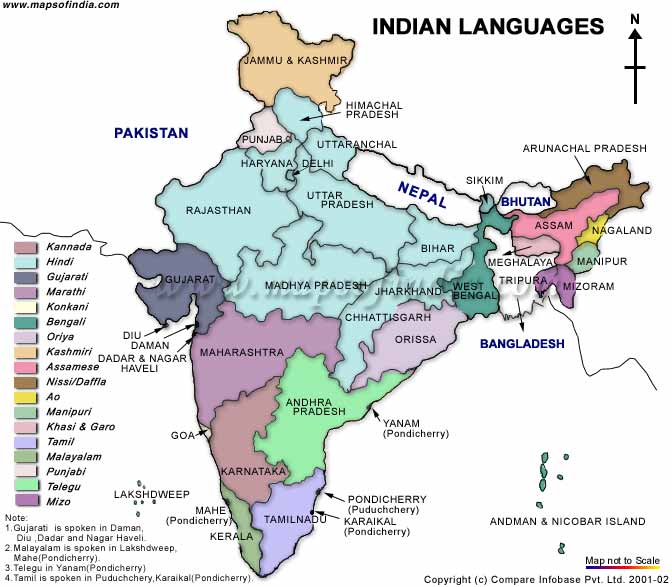
 French graphic and type designer, b. Paris, who graduated from
French graphic and type designer, b. Paris, who graduated from 
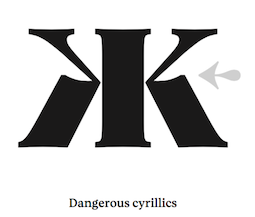 Type foundry in Paris, est. 2016 by Jérémie Hornus, who is the design lead. Type designers associated with Black Foundry include Alisa Nowak and Ilya Naumoff. They initially bought the font collection of FontYou. Typefaces not included in the original FontYou collection:
Type foundry in Paris, est. 2016 by Jérémie Hornus, who is the design lead. Type designers associated with Black Foundry include Alisa Nowak and Ilya Naumoff. They initially bought the font collection of FontYou. Typefaces not included in the original FontYou collection: 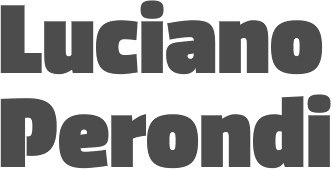 CAST, or Cooperativa Anonima Servizi Tipografici (est. 2014, Bolzano, Italy) is a digital type foundry dedicated to the production and marketing of high quality fonts catering to specific needs, especially in the areas of branding and publishing. Their typefaces:
CAST, or Cooperativa Anonima Servizi Tipografici (est. 2014, Bolzano, Italy) is a digital type foundry dedicated to the production and marketing of high quality fonts catering to specific needs, especially in the areas of branding and publishing. Their typefaces: 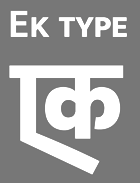 Type design collective in Mumbai, India, est. 2013, managed by Mumbai-based Sarang Kulkarni (b. 1980). Sarang studied at the Sir J J Institute of Applied Art in Mumbai, class of 2002. He worked with R.K. Joshi at the National Centre for Software Technology and Design Temple in 2002. In that same year, he assisted R.K. Joshi with the design of the Jana Gurmukhi typeface. In 2008 and 2009, he created 11 Indic typefaces for Vodafone India. In 2009-2010, he created an additional eight typefaces for Virgin Mobile India. Kulkarni also runs
Type design collective in Mumbai, India, est. 2013, managed by Mumbai-based Sarang Kulkarni (b. 1980). Sarang studied at the Sir J J Institute of Applied Art in Mumbai, class of 2002. He worked with R.K. Joshi at the National Centre for Software Technology and Design Temple in 2002. In that same year, he assisted R.K. Joshi with the design of the Jana Gurmukhi typeface. In 2008 and 2009, he created 11 Indic typefaces for Vodafone India. In 2009-2010, he created an additional eight typefaces for Virgin Mobile India. Kulkarni also runs  Dr. Fiona Ross, is a typographic consultant, typeface designer, lecturer and author, specializing in non-Latin scripts. Fiona holds a BA in German; a Postgraduate Diploma in Sanskrit and Pali; and a PhD in Indian Palaeography from SOAS (London University). From 1978 to 1989, Fiona Ross worked for the British arm of Linotype, Linotype Limited, where she was responsible for the design of their
Dr. Fiona Ross, is a typographic consultant, typeface designer, lecturer and author, specializing in non-Latin scripts. Fiona holds a BA in German; a Postgraduate Diploma in Sanskrit and Pali; and a PhD in Indian Palaeography from SOAS (London University). From 1978 to 1989, Fiona Ross worked for the British arm of Linotype, Linotype Limited, where she was responsible for the design of their  Grégori Vincens is the CEO of FontYou in Paris, est. 2013. The font collection of Font You was bought by the nascent
Grégori Vincens is the CEO of FontYou in Paris, est. 2013. The font collection of Font You was bought by the nascent 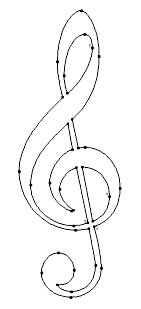 The GNU Freefont is continuously being updated to become a large useful Unicode monster. GNU FreeFont is a free family of scalable outline fonts, suitable for general use on computers and for desktop publishing. It is Unicode-encoded for compatability with all modern operating systems. There are serif, Sans and Mono subfamilies. Also called the "Free UCS Outline Fonts", this project is part of the larger Free Software Foundation. The original head honcho was
The GNU Freefont is continuously being updated to become a large useful Unicode monster. GNU FreeFont is a free family of scalable outline fonts, suitable for general use on computers and for desktop publishing. It is Unicode-encoded for compatability with all modern operating systems. There are serif, Sans and Mono subfamilies. Also called the "Free UCS Outline Fonts", this project is part of the larger Free Software Foundation. The original head honcho was 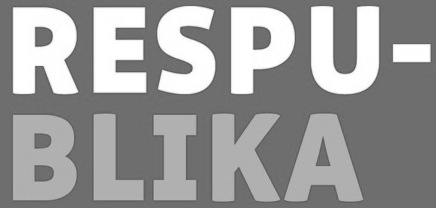 [
[ Born in Riga, Latvia, in 1943, he has mainly cooperated (since 1990) with
Born in Riga, Latvia, in 1943, he has mainly cooperated (since 1990) with 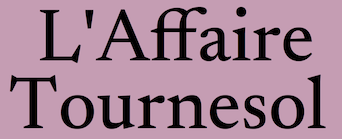 Graduate of ESAD in Amiens, France. His graduation typeface there is the Latin / Bengali typeface
Graduate of ESAD in Amiens, France. His graduation typeface there is the Latin / Bengali typeface 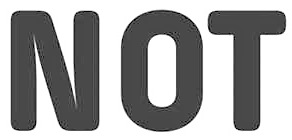 ITF is located in Ahmedabad, Gujarat, India. It was co-founded in 2009 by Peter Bilak (Typotheque) partnered with Rajesh Kejriwal (
ITF is located in Ahmedabad, Gujarat, India. It was co-founded in 2009 by Peter Bilak (Typotheque) partnered with Rajesh Kejriwal ( Indolipi is a multipurpose tool box for indologists and linguists that contains Open Type fonts for most Indian scripts, a Latin font for "instant" transliteration of Indic scripts, and a Unicode based Latin font for writing of scientific texts in a western language containing all transliteration signs used by indologists as well as all presently valid IPA signs. All fonts were made from 2004 until 2006 by Elmar Kniprath (Asien-Afrika institut, University of Hamburg, Germany): e-Bengali OT (for Assamese and Bengali), e-Grantamil (for Grantha Sanskrit, Tamil and Manipravala), e-Grantha OT (for Sanskrit), e-Gujarati OT, e-Kannada OT, e-Malayalam OT (for modern Malayalam), e-Malayalam OTC (for Malayalam with classical orthography), e-Nagari OT (for Sanskrit and Nepali), e-Nagari OTH (for Hindi), e-Nagari OTM (for Marathi), e-Nagari OTR (for Rajasthani), e-Panjabi OT (for Gurmukhi script), e-Sinhala OT, e-Tamil OT (for modern Tamil), e-Tamil OTC (for Tamil with classical orthography), e-Telugu OT, e-Latin Indic (for "instant" Latin transliteration of Indic Unicode texts), e-PhonTranslit UNI (for writing indological texts in a language based on Latin script, also containig all valid IPA signs and a lot of arrows, mathematical and logical signs).
Indolipi is a multipurpose tool box for indologists and linguists that contains Open Type fonts for most Indian scripts, a Latin font for "instant" transliteration of Indic scripts, and a Unicode based Latin font for writing of scientific texts in a western language containing all transliteration signs used by indologists as well as all presently valid IPA signs. All fonts were made from 2004 until 2006 by Elmar Kniprath (Asien-Afrika institut, University of Hamburg, Germany): e-Bengali OT (for Assamese and Bengali), e-Grantamil (for Grantha Sanskrit, Tamil and Manipravala), e-Grantha OT (for Sanskrit), e-Gujarati OT, e-Kannada OT, e-Malayalam OT (for modern Malayalam), e-Malayalam OTC (for Malayalam with classical orthography), e-Nagari OT (for Sanskrit and Nepali), e-Nagari OTH (for Hindi), e-Nagari OTM (for Marathi), e-Nagari OTR (for Rajasthani), e-Panjabi OT (for Gurmukhi script), e-Sinhala OT, e-Tamil OT (for modern Tamil), e-Tamil OTC (for Tamil with classical orthography), e-Telugu OT, e-Latin Indic (for "instant" Latin transliteration of Indic Unicode texts), e-PhonTranslit UNI (for writing indological texts in a language based on Latin script, also containig all valid IPA signs and a lot of arrows, mathematical and logical signs). 
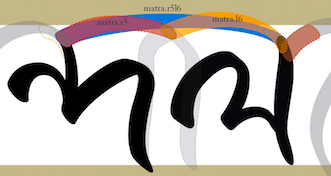 Designer who took the
Designer who took the  [
[ Frenchman Jérémie Hornus studied typography at Le Scriptorium de Toulouse, France and the University of Reading, where he graduated in 2006. He worked at Dalton Maag, where he designed
Frenchman Jérémie Hornus studied typography at Le Scriptorium de Toulouse, France and the University of Reading, where he graduated in 2006. He worked at Dalton Maag, where he designed 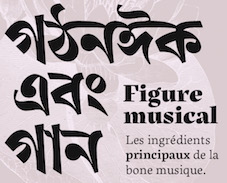 Creator of the rounded script typeface
Creator of the rounded script typeface 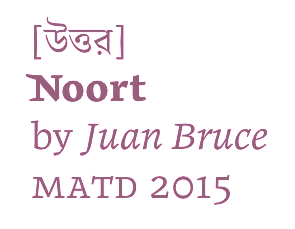 During his
During his 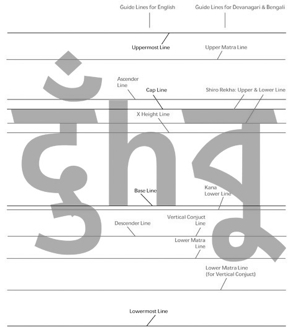 Indian type designer and typographer who received the Gutenberg Prize in 2010. Professor Patel retired from the National Institute of Design, Ahmedabad, in 2003, and presently s an adjunct professor at Symbiosis Institute of Design and MIT Institute of Design, both at Pune. His type design activities:
Indian type designer and typographer who received the Gutenberg Prize in 2010. Professor Patel retired from the National Institute of Design, Ahmedabad, in 2003, and presently s an adjunct professor at Symbiosis Institute of Design and MIT Institute of Design, both at Pune. His type design activities:  The list of new fonts in Windows 7 in 2009:
The list of new fonts in Windows 7 in 2009:  Indian graduate from the type design program at the
Indian graduate from the type design program at the  Mumbai-based codesigner of Modak Latin together with Girish Dalvi and Pradnya Naik. The bubblegum typeface family Modak (Latin & Devanagari) was published in the
Mumbai-based codesigner of Modak Latin together with Girish Dalvi and Pradnya Naik. The bubblegum typeface family Modak (Latin & Devanagari) was published in the  A large free font family released under the Apache license at Google Web Fonts, and developed by Monotype's Steve Matteson and a team of type designers. Designed between 2012 and 2016, this typeface covers over 800 languages and 100 writing scripts.
A large free font family released under the Apache license at Google Web Fonts, and developed by Monotype's Steve Matteson and a team of type designers. Designed between 2012 and 2016, this typeface covers over 800 languages and 100 writing scripts.  Very prolific Argentinian type designer (b. 1976) located in Rosario. His extensive repertoire:
Very prolific Argentinian type designer (b. 1976) located in Rosario. His extensive repertoire:  [
[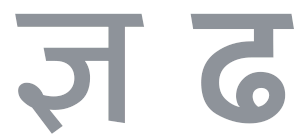 Pria Ravichandran (formerly Pria Adireddi, b. 1984, India) studied type design
Pria Ravichandran (formerly Pria Adireddi, b. 1984, India) studied type design  Typography professor R.K. Joshi's pages. He was born in 1936 in Kolhapur, Maharashtra, India, and died in San Francisco in 2008. He was a poet, calligrapher, designer, researcher, teacher and
Typography professor R.K. Joshi's pages. He was born in 1936 in Kolhapur, Maharashtra, India, and died in San Francisco in 2008. He was a poet, calligrapher, designer, researcher, teacher and 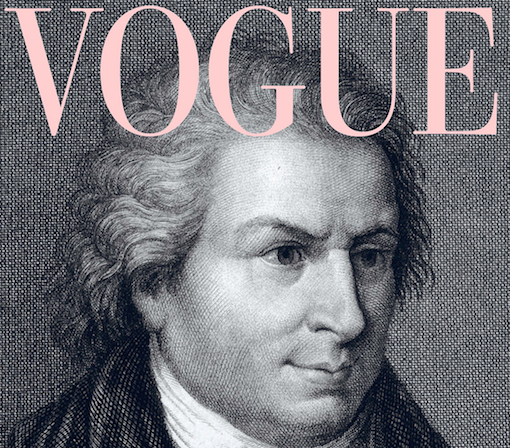 Prior to a four-year stint as a lecturer in typography at the faculty of design and Art of the free University of Bolzano (2009-2013), Italian type designer Riccardo Olocco freelanced as a graphic designer in Milan and elsewhere in Italy. He graduated in 2014 from the
Prior to a four-year stint as a lecturer in typography at the faculty of design and Art of the free University of Bolzano (2009-2013), Italian type designer Riccardo Olocco freelanced as a graphic designer in Milan and elsewhere in Italy. He graduated in 2014 from the 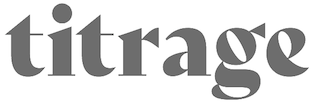 Type and graphic designer in Paris (b. 1991) who studied at Ecole Estienne in Paris (class of 2010), ESAAB Nevers (class of 2012), and finally at ESAD Amiens (class of 2014), where she was in the postgraduate program on typography and language. She won the
Type and graphic designer in Paris (b. 1991) who studied at Ecole Estienne in Paris (class of 2010), ESAAB Nevers (class of 2012), and finally at ESAD Amiens (class of 2014), where she was in the postgraduate program on typography and language. She won the  Graphic design graduate of the National Institute of Design, Ahmedabad, who is from New Delhi. In 2012, during his studies, he created
Graphic design graduate of the National Institute of Design, Ahmedabad, who is from New Delhi. In 2012, during his studies, he created 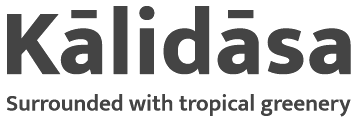 [
[ Designer of Korobi during a workshop at
Designer of Korobi during a workshop at 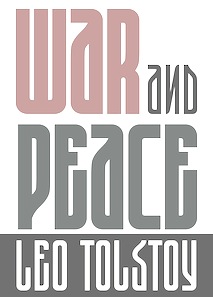 Senior designer in Banagalore. Creator of the Latin / Cyrillic constructivist typeface
Senior designer in Banagalore. Creator of the Latin / Cyrillic constructivist typeface  Reinis Ludvik's Riga-based Latvian font design and software development company sells high quality fonts (adapted from Bitstream fonts) for Baltic, Cyrillic, Turkish and Eastern European languages. Includes the
Reinis Ludvik's Riga-based Latvian font design and software development company sells high quality fonts (adapted from Bitstream fonts) for Baltic, Cyrillic, Turkish and Eastern European languages. Includes the 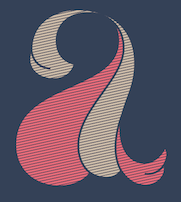 WhiteCrow is a type foundry and design studio founded by Sarang Kulkarni in Mumbai in 2005. It specializes in multilingual branding, type design and calligraphy. A collective of type designers, the White Crow team creates customized typefaces for all Indian scripts, including Devanagari, Bangla, Gujarati, Tamil, Telugu, Kannada, Malayalam, Gurmukhi, Meitei Mayek (Manipuri), Oriya and Urdu. Their typefaces:
WhiteCrow is a type foundry and design studio founded by Sarang Kulkarni in Mumbai in 2005. It specializes in multilingual branding, type design and calligraphy. A collective of type designers, the White Crow team creates customized typefaces for all Indian scripts, including Devanagari, Bangla, Gujarati, Tamil, Telugu, Kannada, Malayalam, Gurmukhi, Meitei Mayek (Manipuri), Oriya and Urdu. Their typefaces: 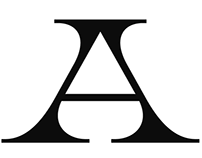 Graduate of Ecole Estienne in Paris, who lives in Paris, where is the lead designer at
Graduate of Ecole Estienne in Paris, who lives in Paris, where is the lead designer at